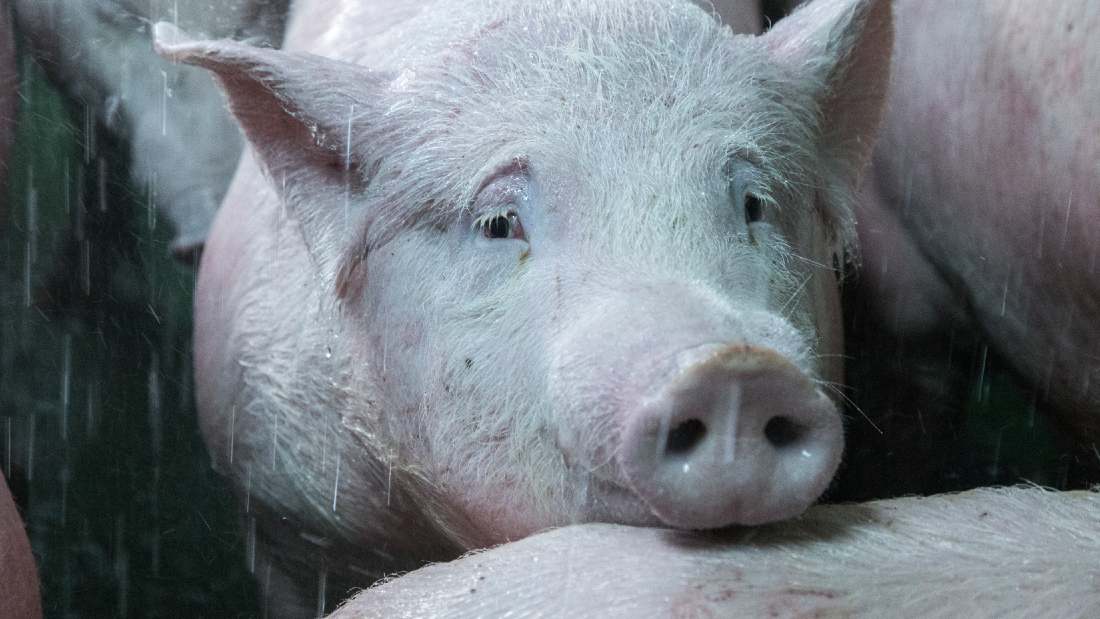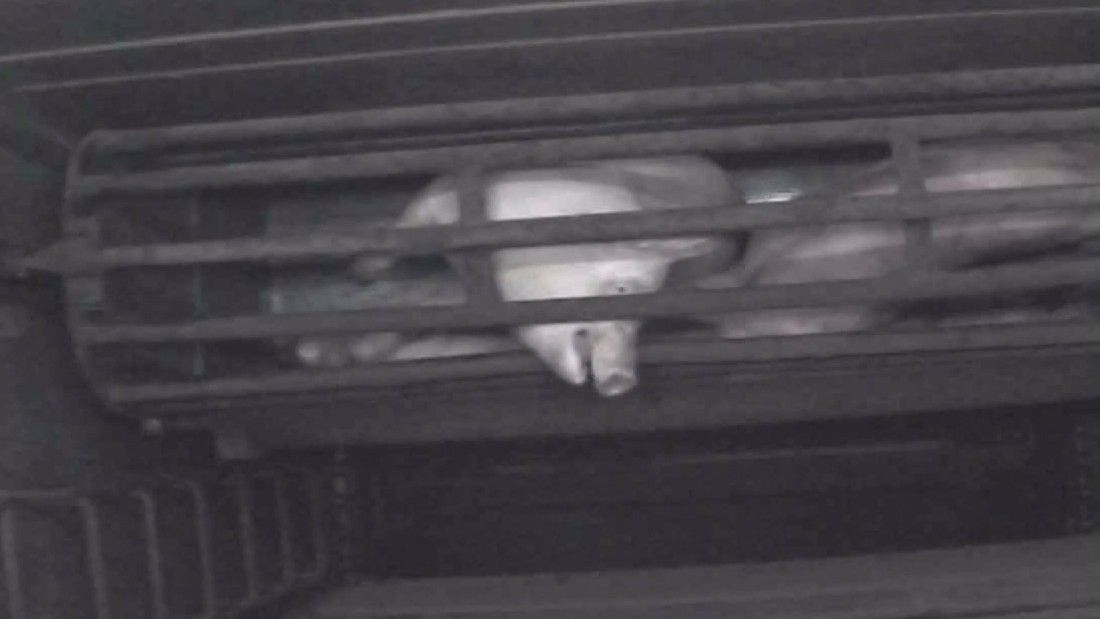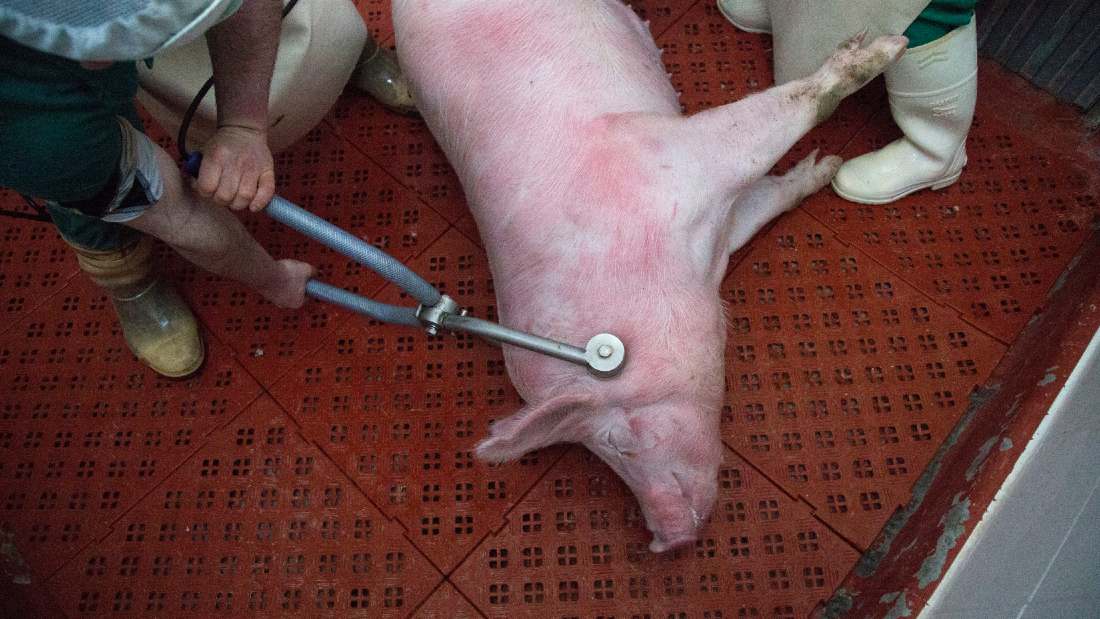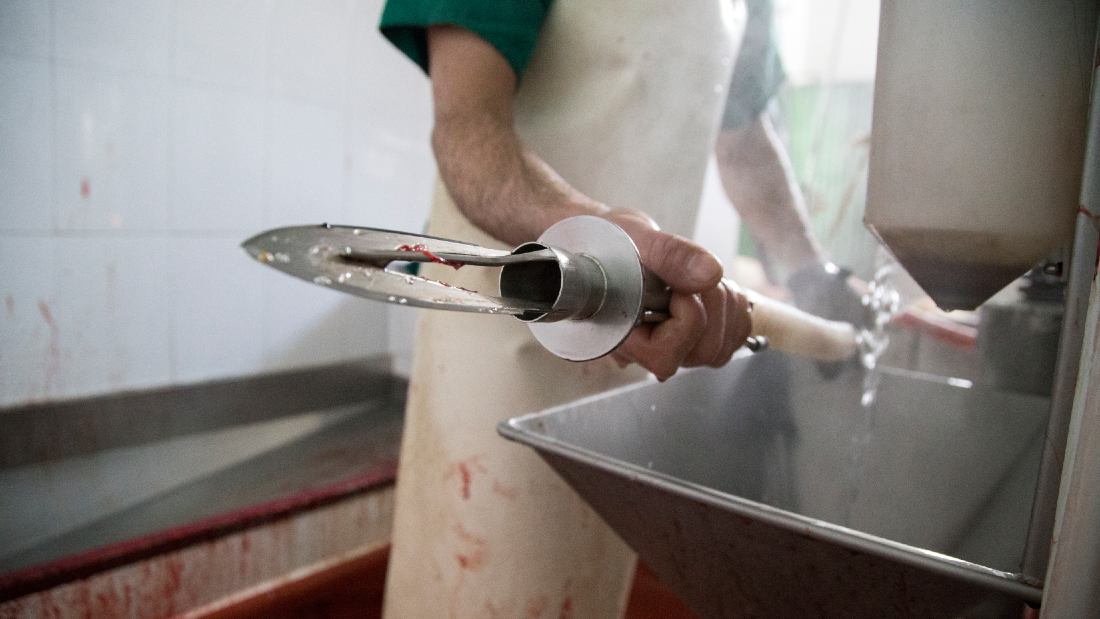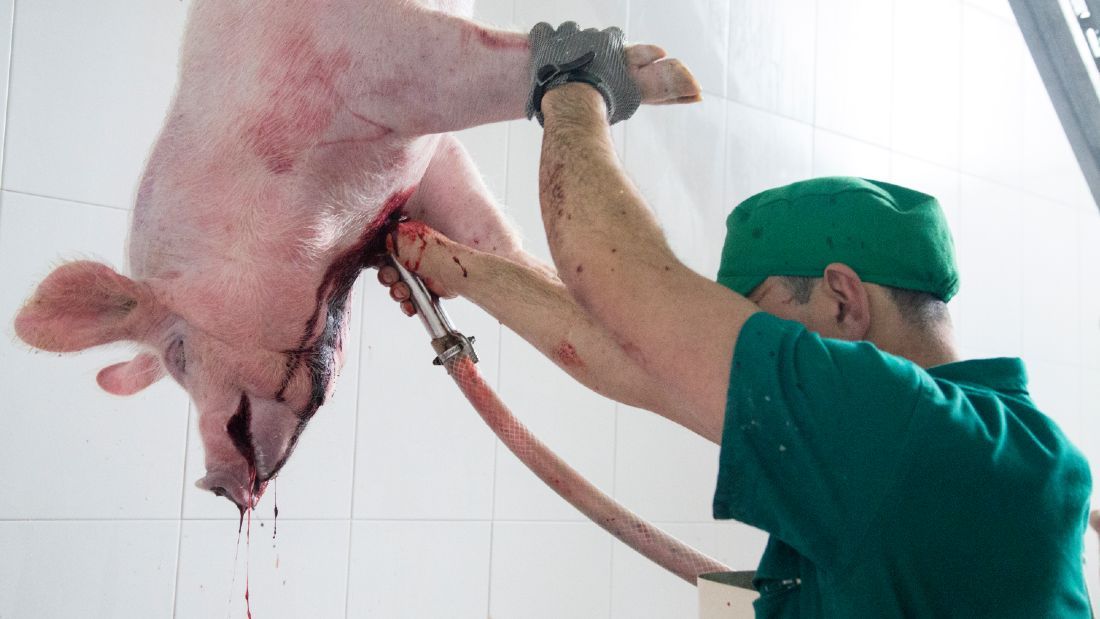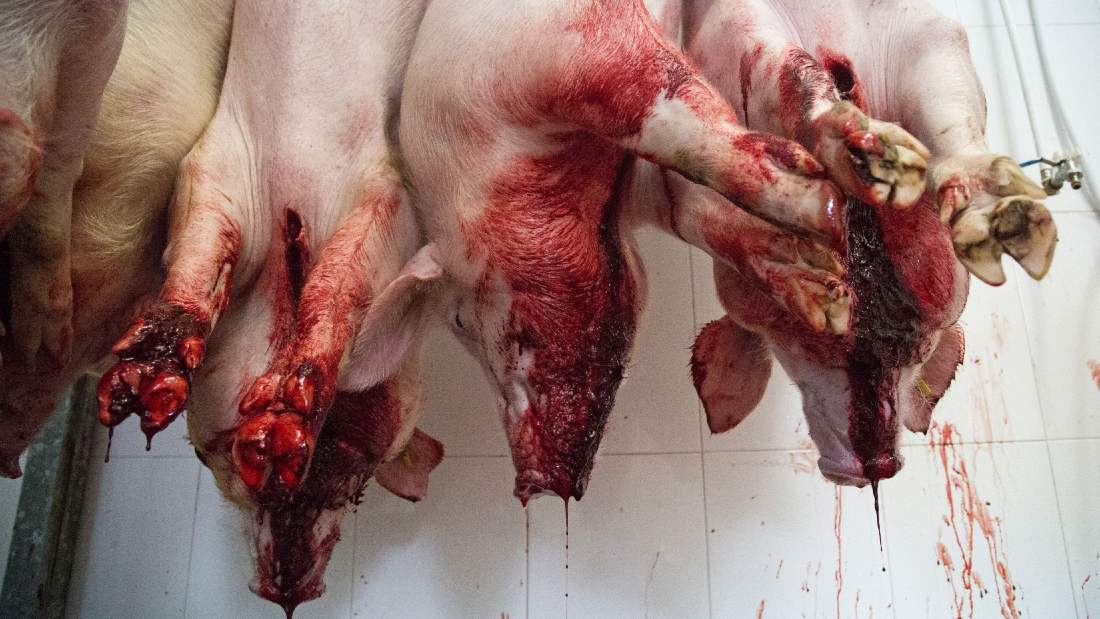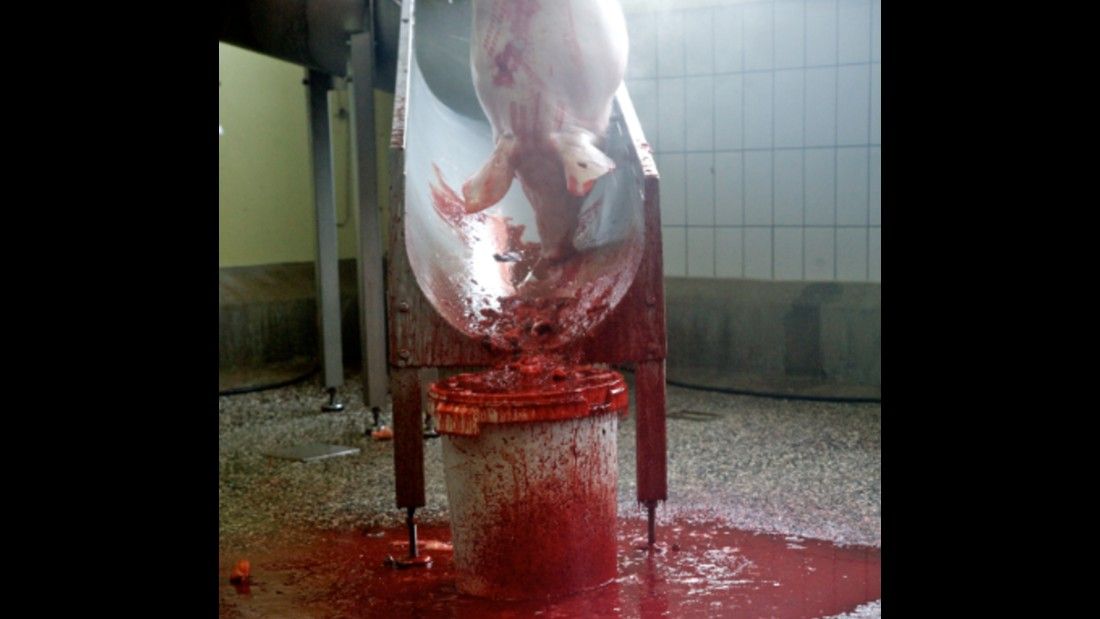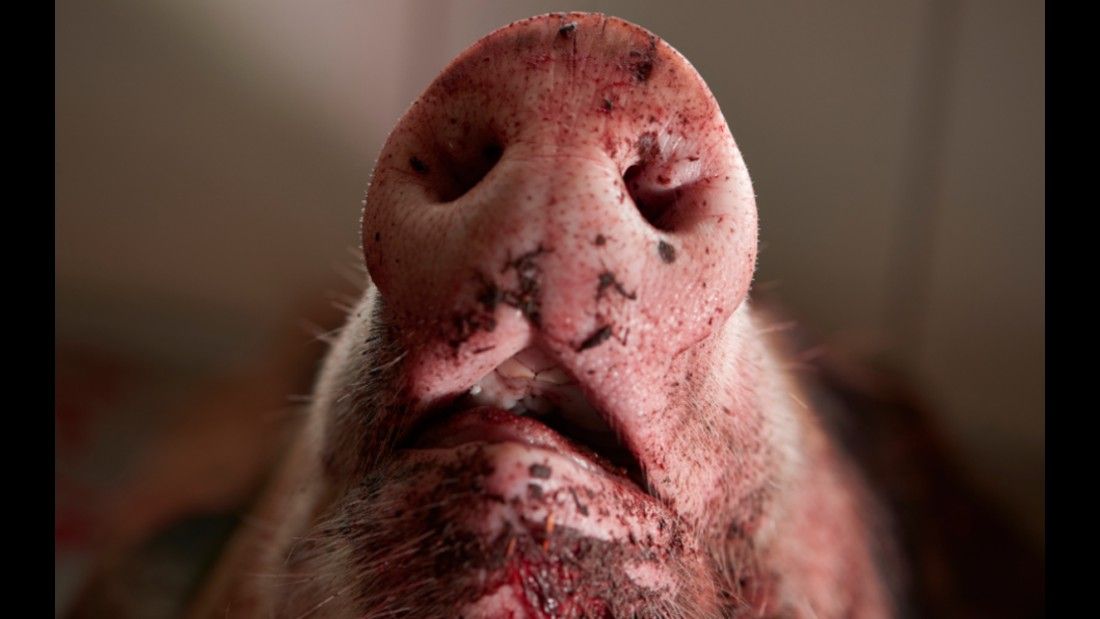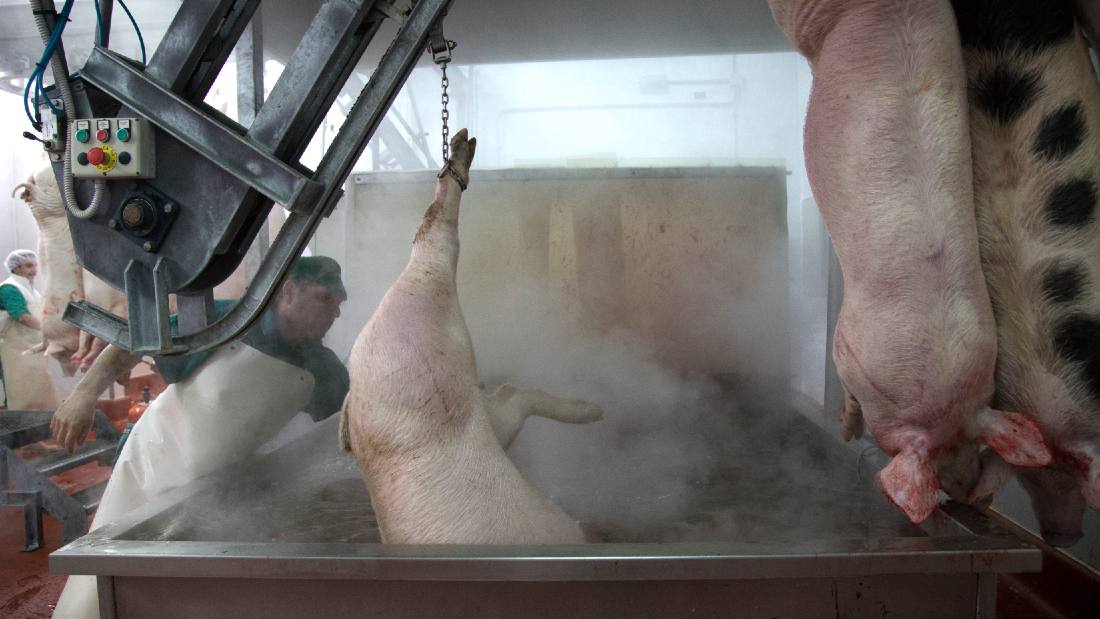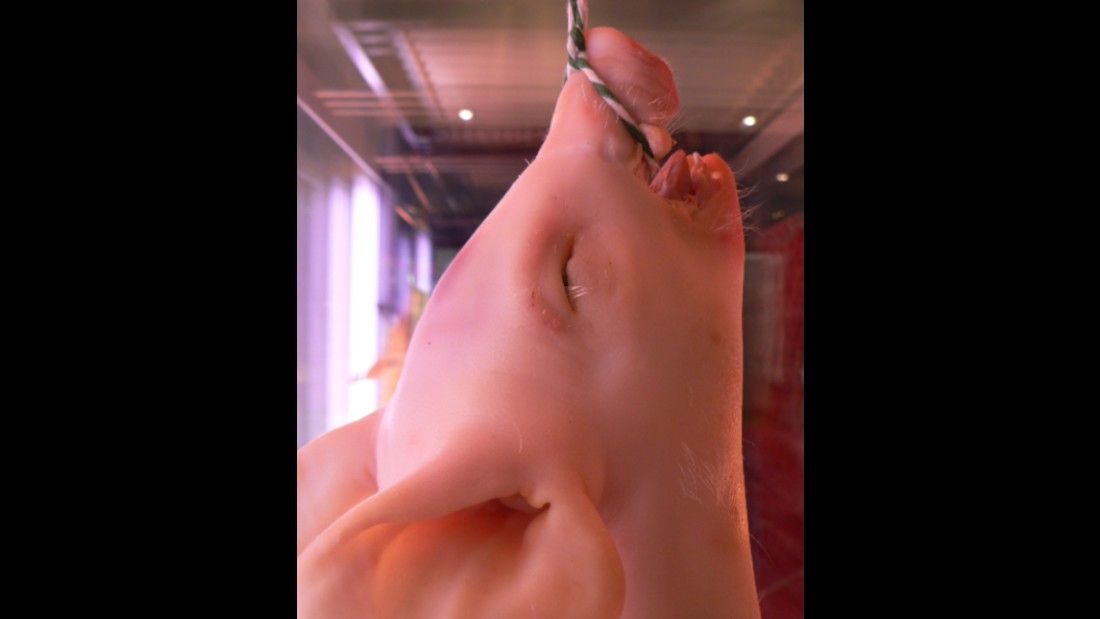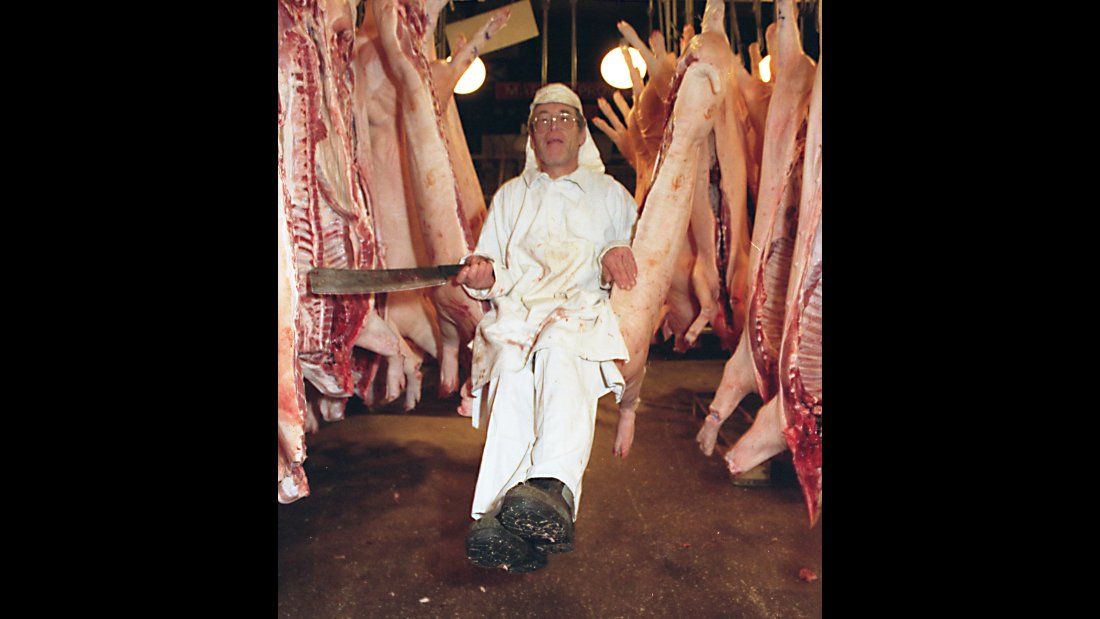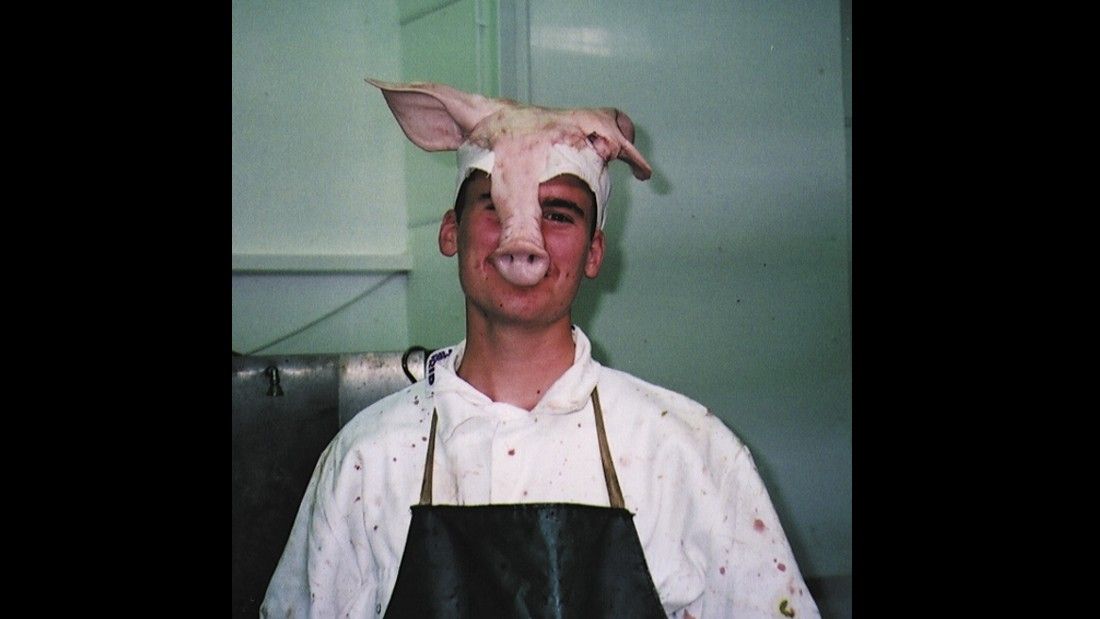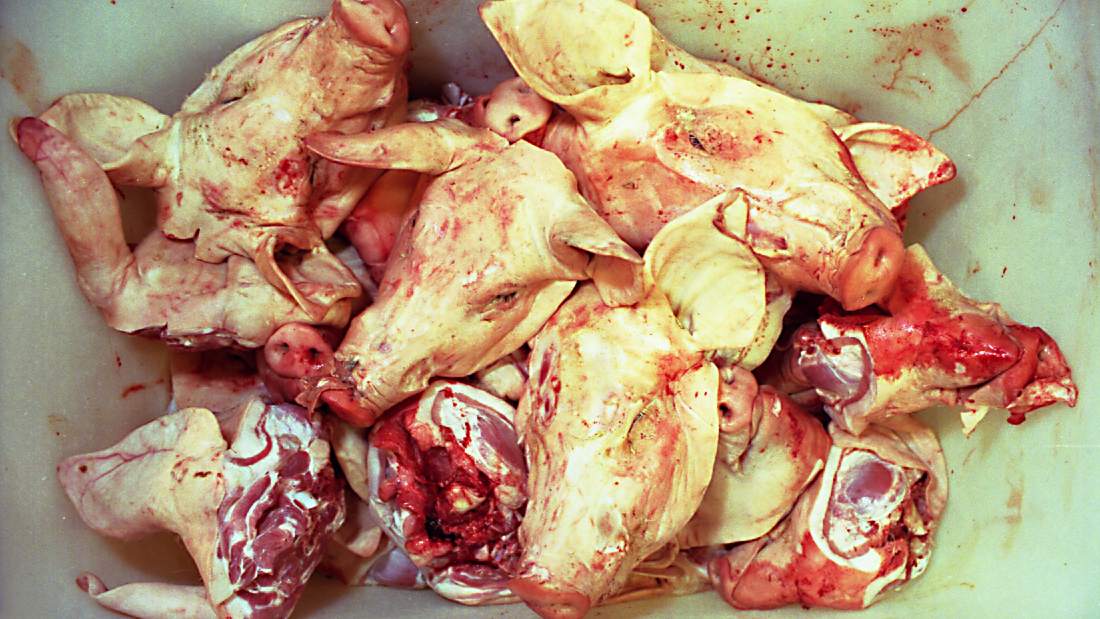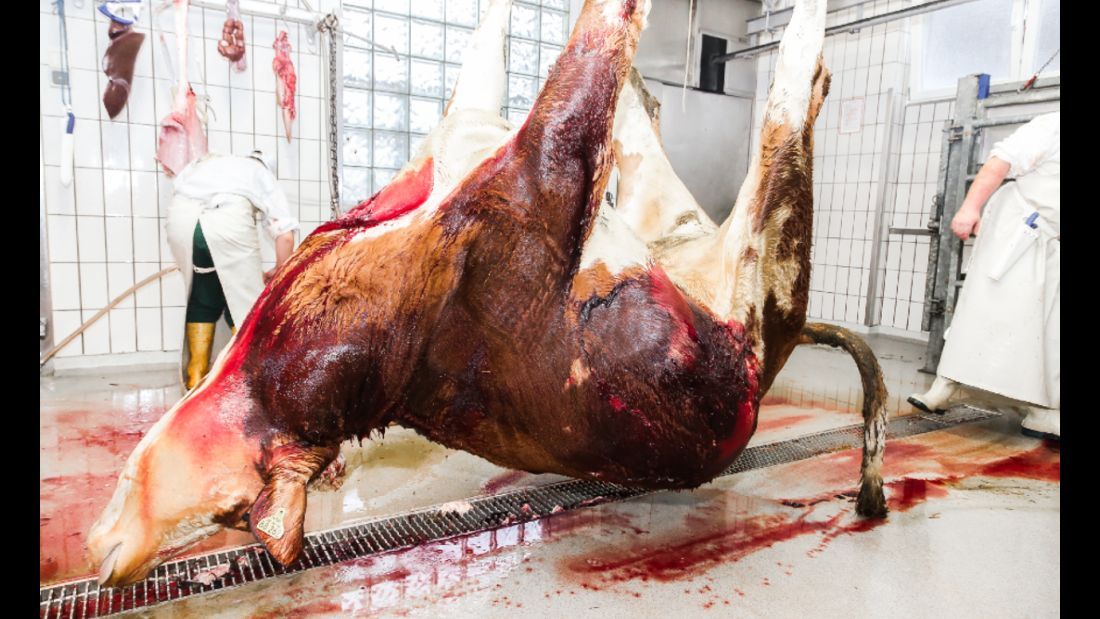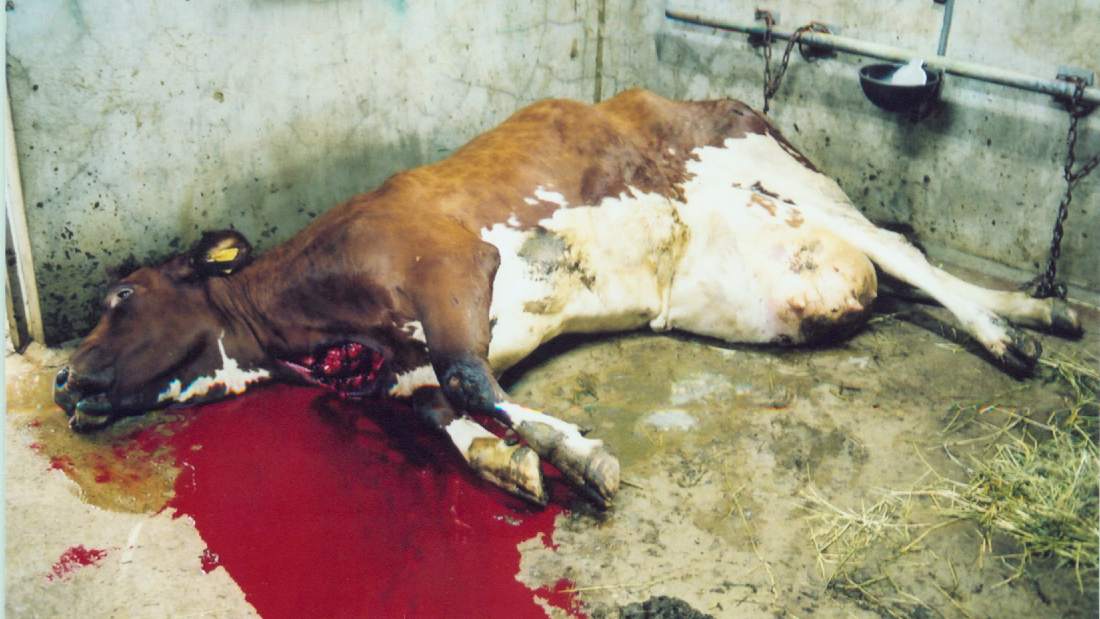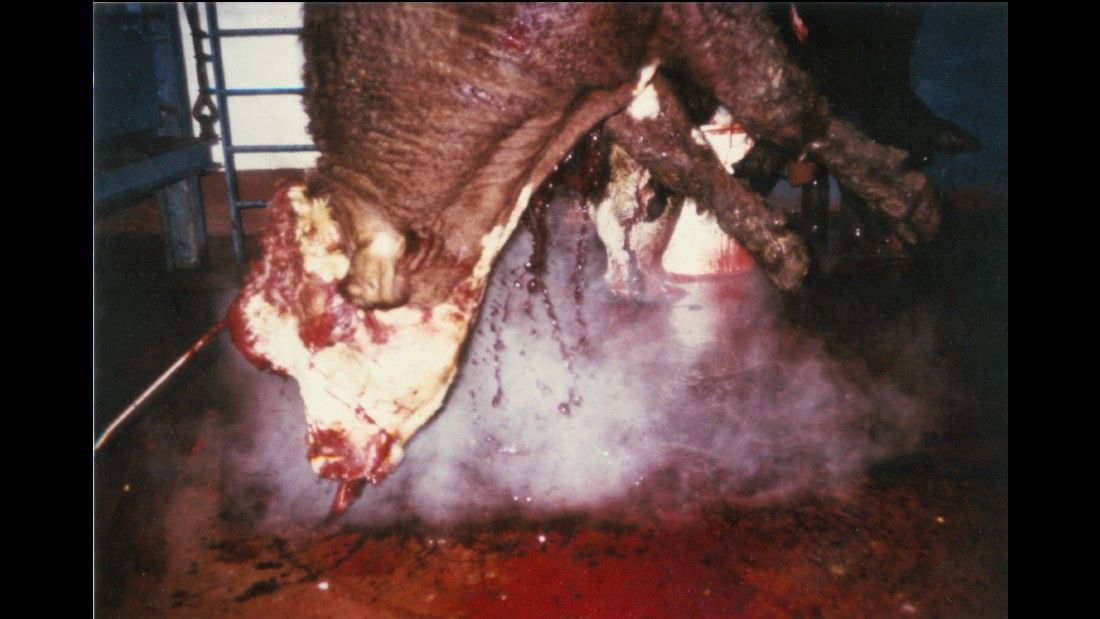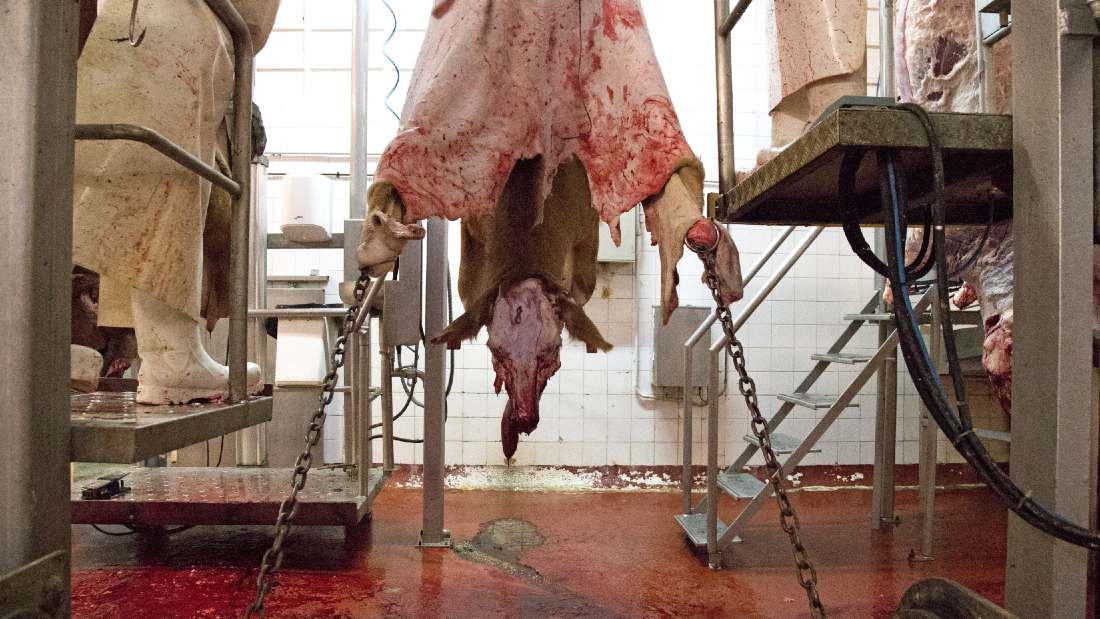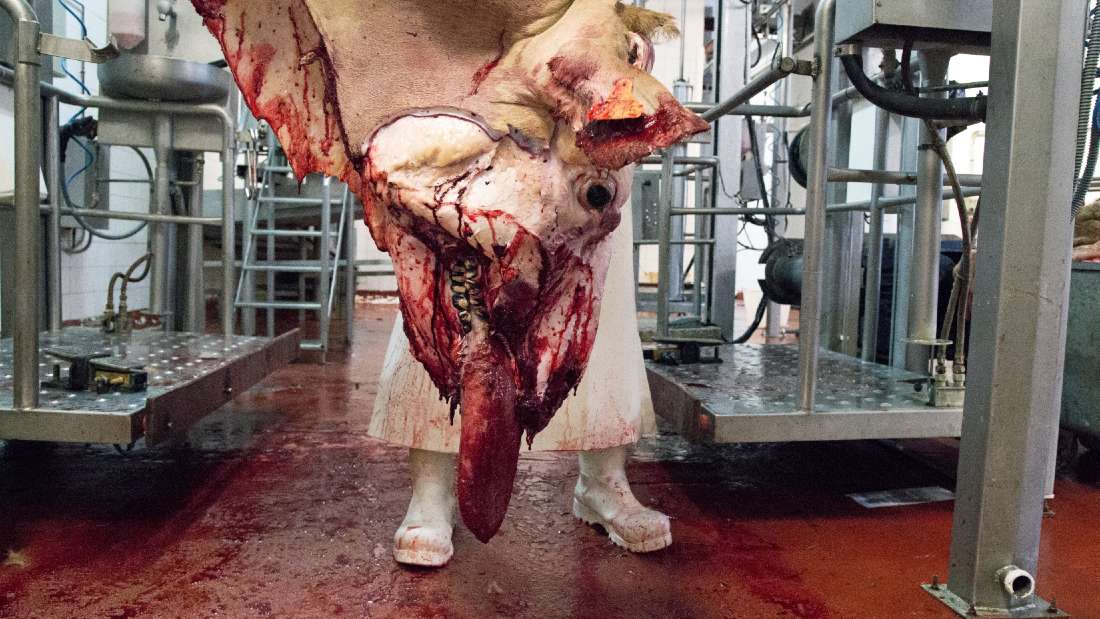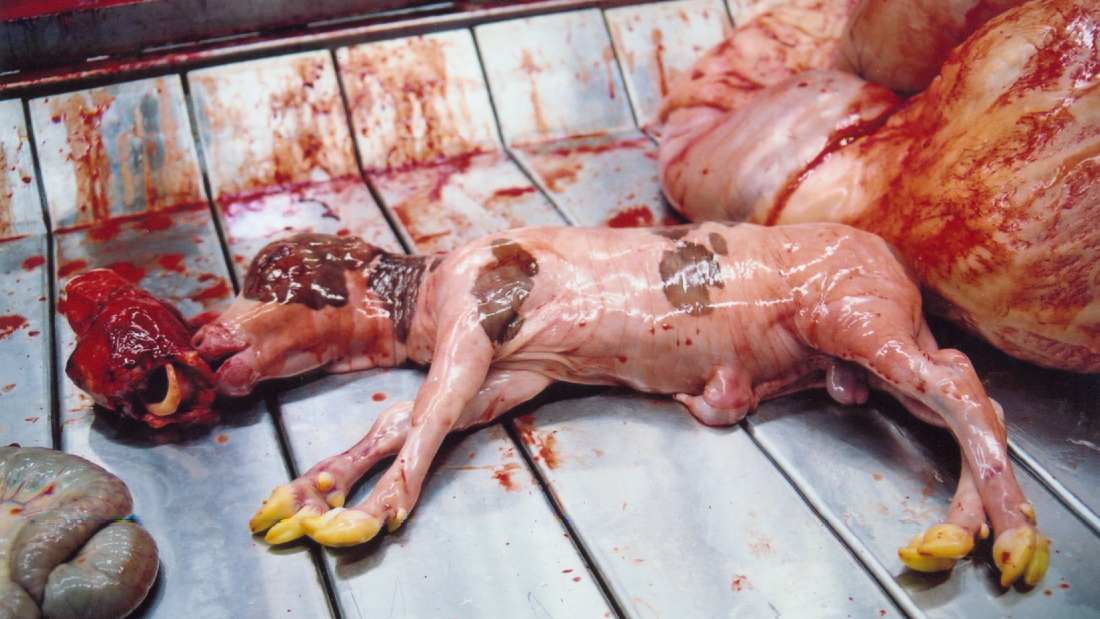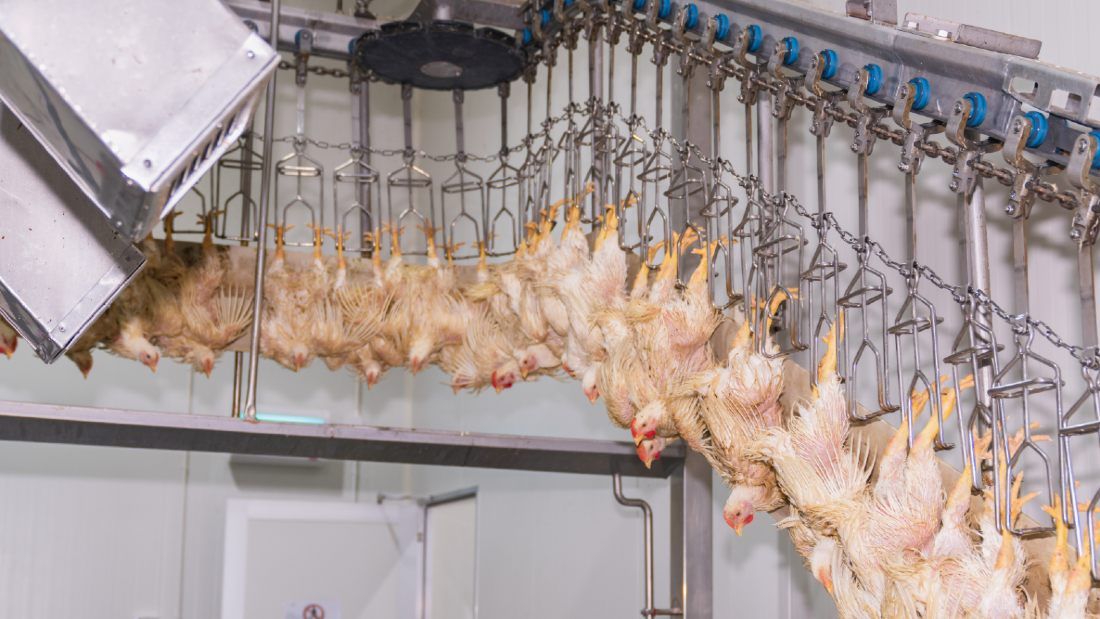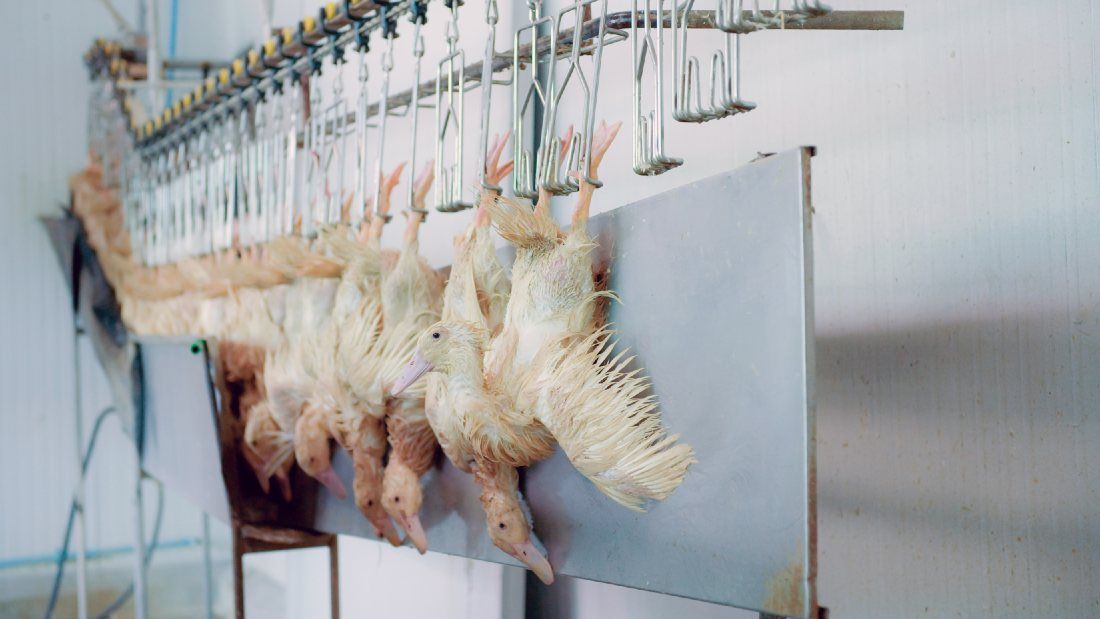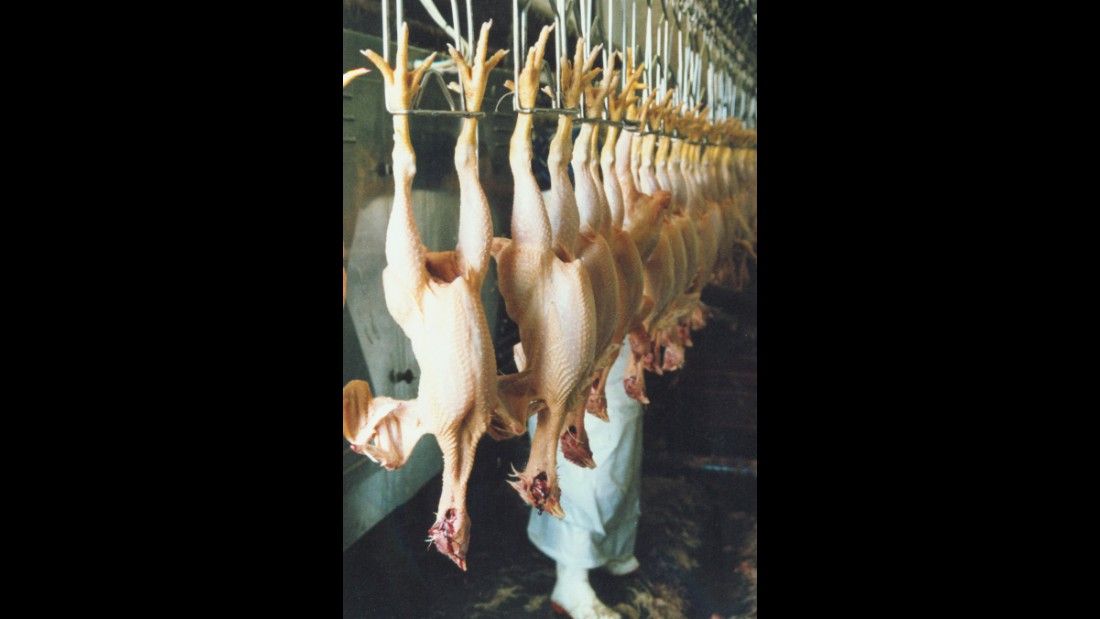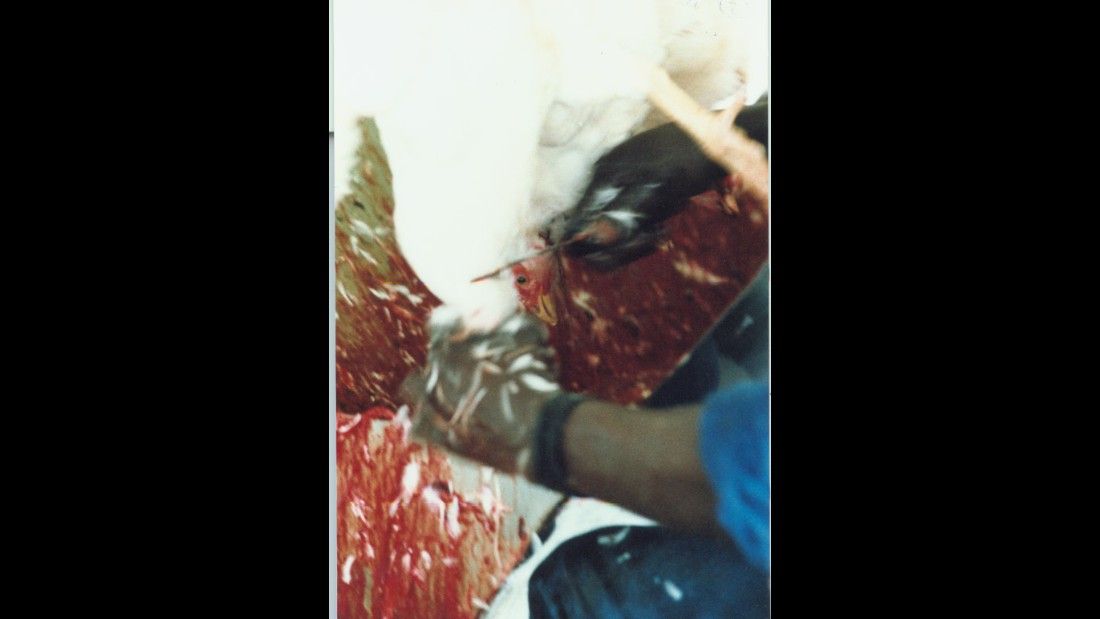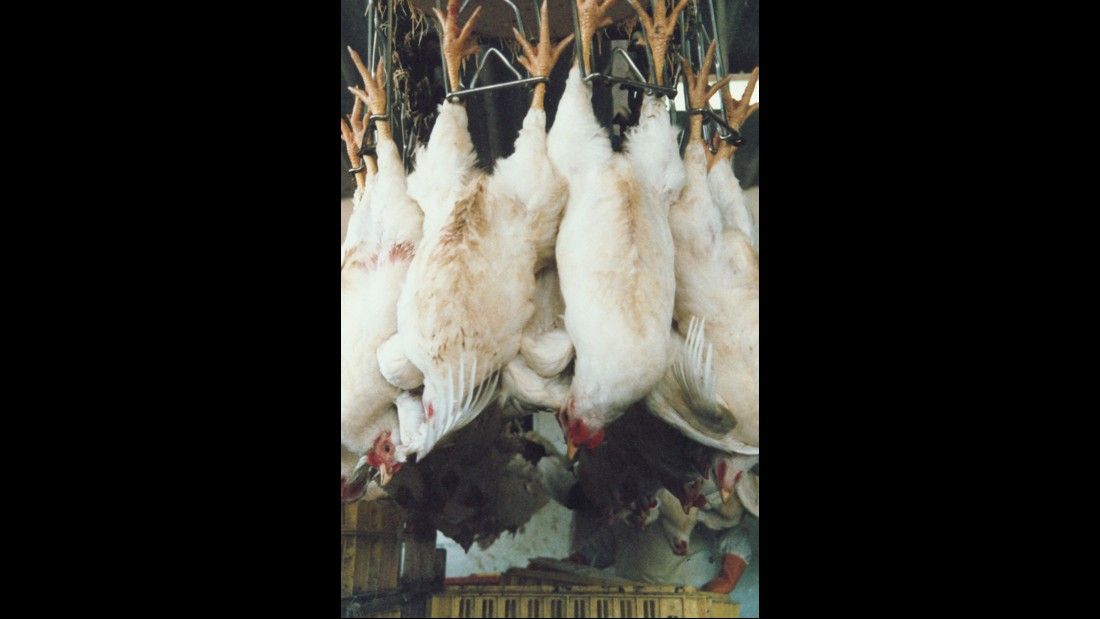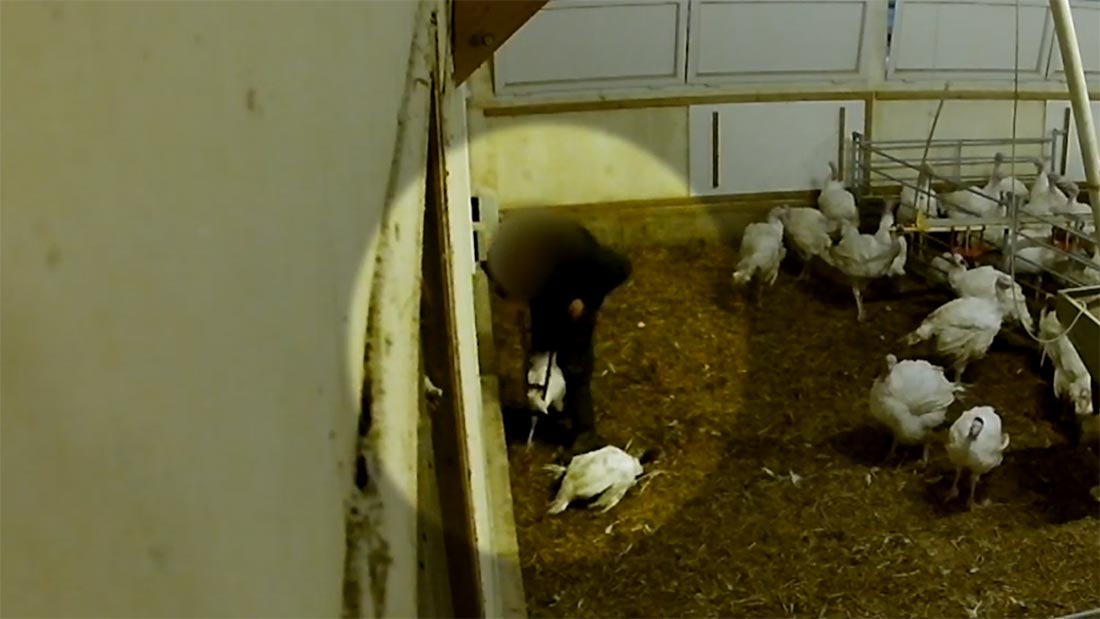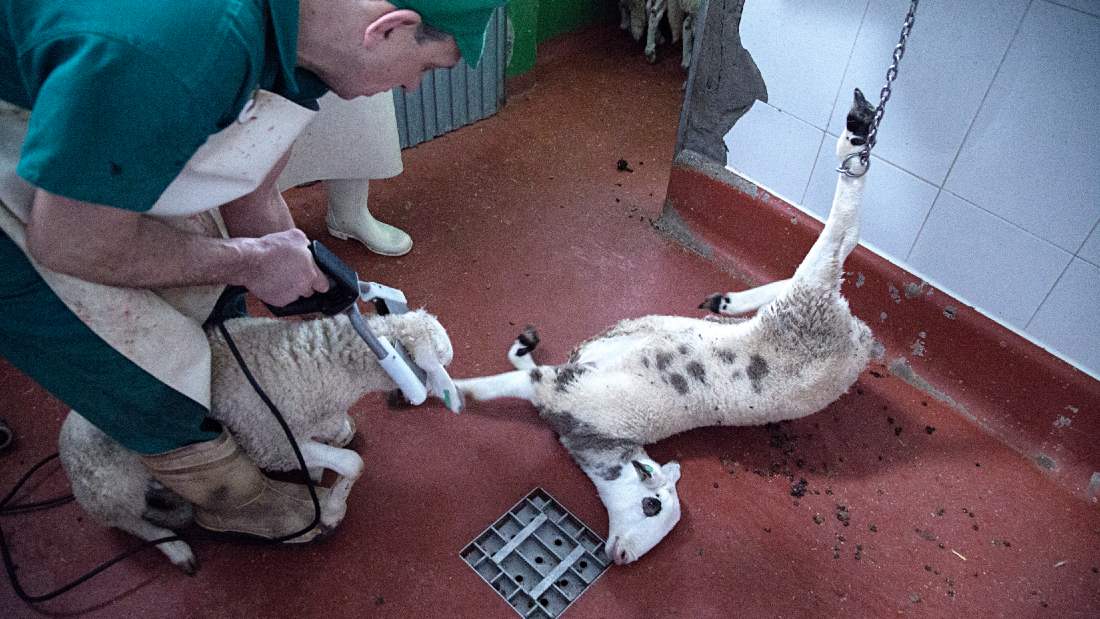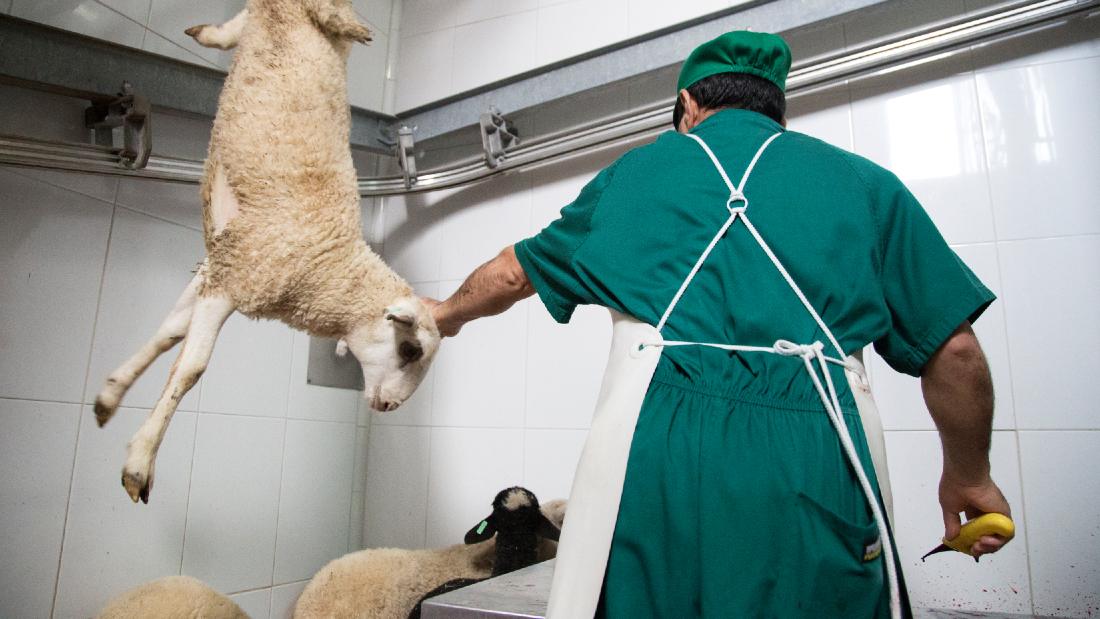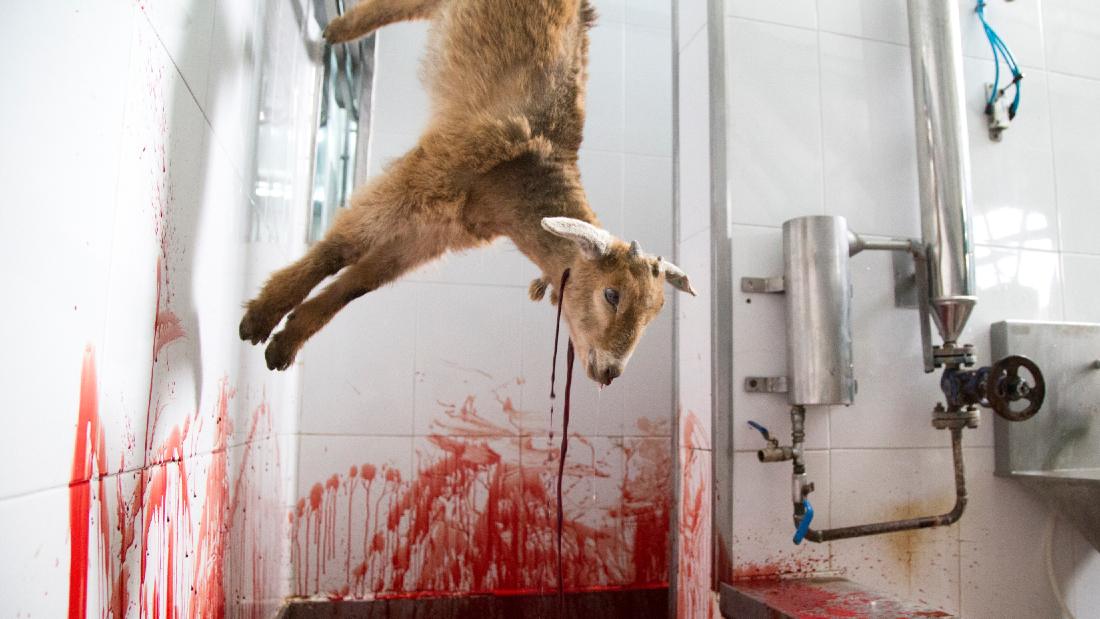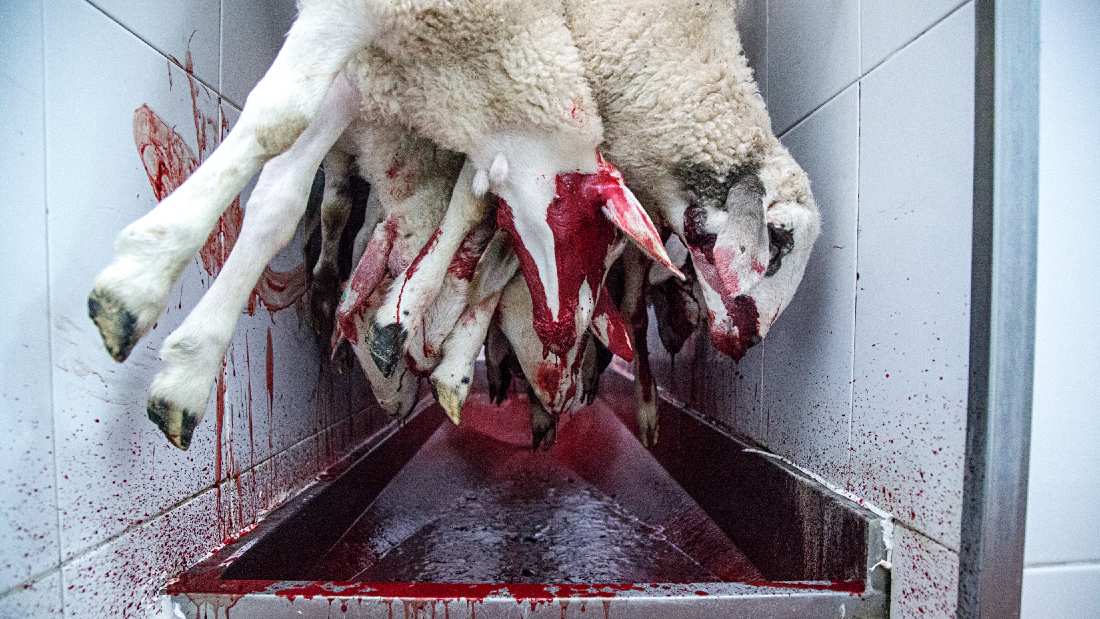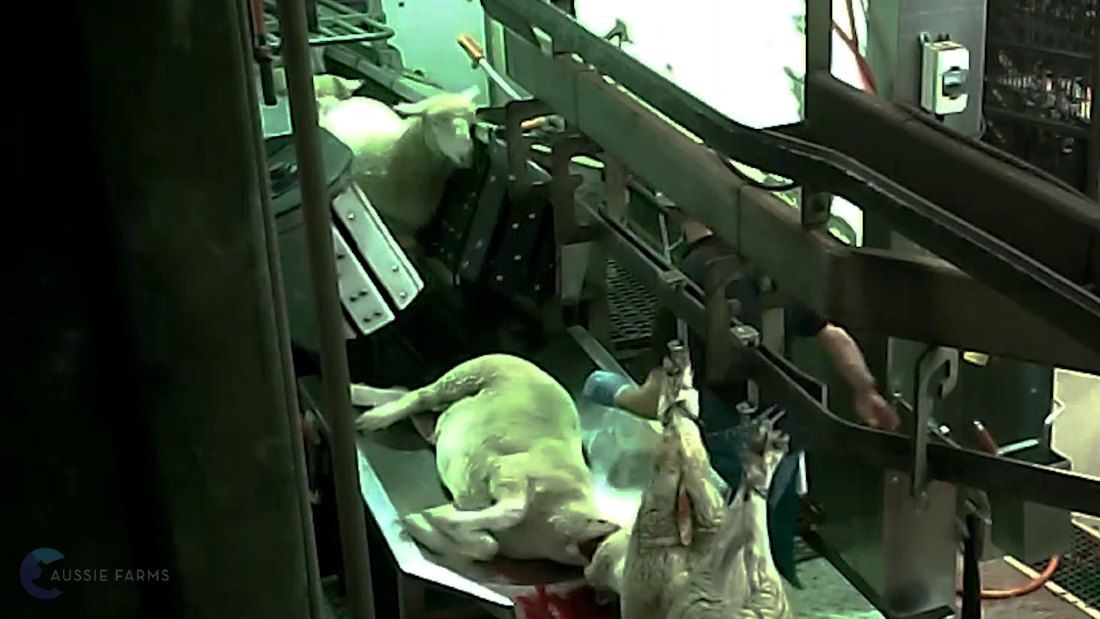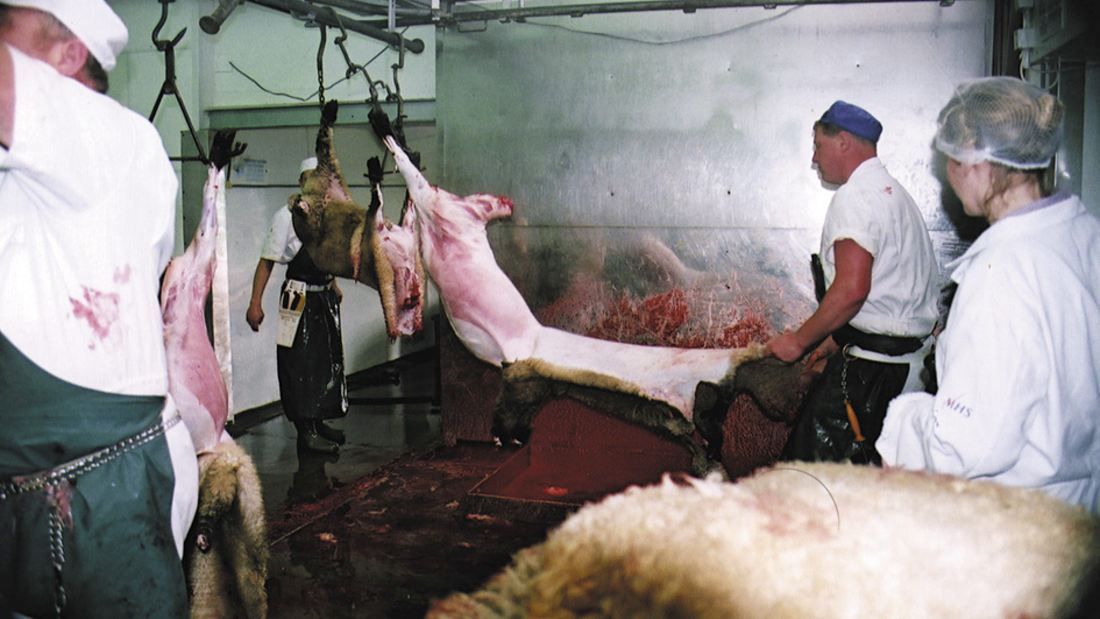Slaughter: how animals are killed
Every year in the UK around 1.2 billion land animals are slaughtered for human consumption. This includes over one billion chickens, 14 million sheep and lambs, 9.8 million pigs, nine million turkeys and 2.8 million cattle.1Defra. 2024. Agriculture in the United Kingdom 2023. Available at: https://www.gov.uk/government/statistics/agriculture-in-the-united-kingdom-2023 In addition, over one billion fish2Fishcount. 2019. Estimated numbers of individuals in average annual fish capture (FAO) by country fishing fleets (2007 to 2016): http://fishcount.org.uk/studydatascreens/2016/numbers-of-wild-fish-B0-2016.php?countrysort=United%2BKingdom%2Fsort2 and billions of shellfish are killed.3Animal Kill Clock. 2025. Calculation based on tonnage by species as reported by MMO and Cefas and shellfish market sizes provided by FAO: https://animalclock.org/uk
These numbers are almost incomprehensible in their scale, so it’s no surprise that commercial slaughter is a disturbingly efficient, well-oiled production line that treats animals as nothing more than commodities.
- Find out more about the number of animals killed in the UK.
Whether the final product is labelled as ‘free range’, ‘organic’ or ‘pasture-reared’, or the slaughter method is deemed ‘humane’, a farmed animal’s final moments will end in pain and terror. The fact remains, all slaughter takes away the life of an animal that doesn’t want to die. Many of these animals are babies or the equivalent age of teenagers; many are pregnant mothers.

What is meant by humane slaughter?
The principle of humane slaughter aims to ensure that an animal does not feel pain or experience suffering when he or she is killed. For this reason, UK law requires that farmed animals are effectively restrained and stunned before they are killed, or stunned and killed at the same time. The Humane Slaughter Association (HSA) states that “If a stunning method does not cause instantaneous unconsciousness, the method must be non-aversive (ie must not cause pain, fear or other unpleasant feelings) to the animal before it becomes unconscious.”
Despite this, however well it is marketed, humane slaughter does not mean that animals don’t experience extreme fear and terrible suffering.
A legal exception is given to animals slaughtered under religious rites to provide halal and kosher meat, for the Muslim and Jewish communities, respectively. See more on this below.
Ineffective stunning
There are many reasons why stunning an animal could be ineffective – faulty equipment, human error, poorly trained or unprofessional slaughter workers. Ineffective stunning can leave an animal in an agonising state where they are unable to move, but still able to see, hear and feel when their throat is slit.
Statistics are not released on the number of animals inadequately stunned and it is widely considered to be underreported by slaughter workers who don’t want to admit their negligence.
However, a Food Standards Agency survey for England and Wales estimated that 120 million poultry and 23,000 cattle would be slaughtered without an effective stun in 2018.4Veterinary Policy Research Foundation (VPRF). 2018. Non-stun slaughter: key facts. Available at: https://www.vprf.co.uk/_files/ugd/a05415_c287fc2451c3464489cefae396f6bc1d.pdf
Legislation
Slaughter in the UK is governed by retained EU legislation and UK regulations called ‘Welfare of Animals at the Time of Killing’ (WATOK). The Government issues licences and guidelines relating to slaughter methods, transporting and restraining animals in preparation for slaughter, and minimum competency requirements for slaughterhouse workers.
Slaughterhouses are overseen by the Food Standards Association (FSA) who can send an official FSA vet, or an officer from the Animal and Plant Health Agency (APHA), to inspect the slaughterhouse. Most of these inspections are pre-arranged with the abattoir, which gives them time to prepare for the visit. Of course these visits should be unannounced.
Around half of all slaughterhouses in the UK are members of third-party so-called ‘assurance schemes’ such as Red Tractor, Freedom Foods (RSPCA), Soil Association and the British Retail Consortium (BRC).
Livestock
The figures for different slaughter methods given below are taken from the results of a survey the Food Standards Agency (FSA) carried out at all slaughterhouses operating in England and Wales during the period 12 to 18 February 2024, on behalf of Defra and the Welsh Government. The FSA figures are a snapshot of one week and a yearly predicted figure is then calculated from this. The full report can be found here.

Pigs
Number killed
Ten million a year.1Defra. 2024. Agriculture in the United Kingdom 2023. Available at: https://www.gov.uk/government/statistics/agriculture-in-the-united-kingdom-2023
Methods
90 per cent of pigs are stunned with high concentration CO2, almost all the remaining 10 per cent are stunned through electrical stunning (electronarcosis) to the head.2Food Standards Agency. 2024. Results of the 2024 FSA Slaughter Sector Survey in England and Wales. Available at: https://www.gov.uk/government/publications/farm-animals-slaughter-sector-survey-2024
- Find out more about pigs
- Find out more about pig gassing

Cattle (Adult Beef Cattle and Dairy Cows)
Number killed
2.8 million a year.1Defra. 2024. Agriculture in the United Kingdom 2023. Available at: https://www.gov.uk/government/statistics/agriculture-in-the-united-kingdom-2023 Including an estimated tens of thousands of pregnant dairy cows.3EFSA Panel on Animal Health and Welfare (AHAW). 2017. Animal welfare aspects in respect of the slaughter or killing of pregnant livestock animals (cattle, pigs, sheep, goats, horses). EFSA Journal. 15 (5) e04782.
Methods
97 per cent are stunned prior to slaughter (82 per cent by captive bolt, 12 per cent by Jarvis box – an electrical stunning device – and the rest by halal stun methods). Non-stun slaughter accounted for three per cent, primarily using halal methods.2Food Standards Agency. 2024. Results of the 2024 FSA Slaughter Sector Survey in England and Wales. Available at: https://www.gov.uk/government/publications/farm-animals-slaughter-sector-survey-2024
- Find out more about cattle
- Find out more about dairy cows

Calves (Dairy)
Number killed
81,744 male dairy calves under eight months old were killed in 2024. Of those, 49,204 under the age of eight months were killed in slaughterhouses, a slightly lower number than in previous years (57,435 in 2023 and 59,658 in 2022).4Rural Payments Agency. 2025. FOI release RFI 7326 number of male calves killed in slaughterhouses and on-farm.
Also included in the 81,774, were 32,540 male calves under the age of two months who were killed on-farm in 2024, a similar number to previous years (33,727 in 2023 and 33,451 in 2022).4Rural Payments Agency. 2025. FOI release RFI 7326 number of male calves killed in slaughterhouses and on-farm.
Method
In slaughterhouses: 94 per cent of calves less than eight months old were stunned prior to slaughter (85 per cent by captive bolt, six per cent by electronarcosis and the rest by halal stun methods). Six per cent were slaughtered by non-stun methods, mainly halal non stun.2Food Standards Agency. 2024. Results of the 2024 FSA Slaughter Sector Survey in England and Wales. Available at: https://www.gov.uk/government/publications/farm-animals-slaughter-sector-survey-2024 After being stunned, the calves were ‘bled out’ (knifed in the neck to sever major blood vessels and bled to death).
On farm: legal methods to kill the unwanted male dairy calves on farm include a shot to the head with a free bullet from a shotgun, pistol or rifle; or a penetrative captive bolt device, followed by pithing or bleeding. It is unknown what percentage of each are used. Male calves killed on farm don’t enter the human food chain, but may be sent to a knackers yard, processed for pet food or fed to hunting dogs, burnt (incineration), buried or sent for rendering to be used in a wide range of products. By law, people who kill animals on farm must have either a Welfare of Animals at the Time of Killing (WATOK) licence or a Certificate of Competence (CoC).
- Find out more about dairy cows

Egg-laying hens
Number killed
Over 25 million ‘spent’ egg-laying hens are killed each year in the UK.5UK Food Standards Agency. 2025. Response to Viva! Freedom of Information Request 00033, January 17 2025.
Method
99 per cent of spent hens were slaughtered by gas stun methods and the remaining less than one per cent by halal non-stun methods.2Food Standards Agency. 2024. Results of the 2024 FSA Slaughter Sector Survey in England and Wales. Available at: https://www.gov.uk/government/publications/farm-animals-slaughter-sector-survey-2024
- Find out more about egg-laying hens

Chicks
Number killed
Around 40 to 45 million male chicks a year.6Animal Welfare Committee (AWC). 2024. Opinion on alternatives to culling newly hatched chicks in the egg and poultry industries. Available at: https://www.gov.wales/sites/default/files/publications/2023-11/awc-opinion-alternatives-culling-newly-hatched-chicks-poultry-industry.pdf
Method
100 per cent are gassed using argon in a depleted oxygen chamber. Maceration is still permitted but no longer used on a wide scale in the UK.6Animal Welfare Committee (AWC). 2024. Opinion on alternatives to culling newly hatched chicks in the egg and poultry industries. Available at: https://www.gov.wales/sites/default/files/publications/2023-11/awc-opinion-alternatives-culling-newly-hatched-chicks-poultry-industry.pdf
- Find out more about chicks
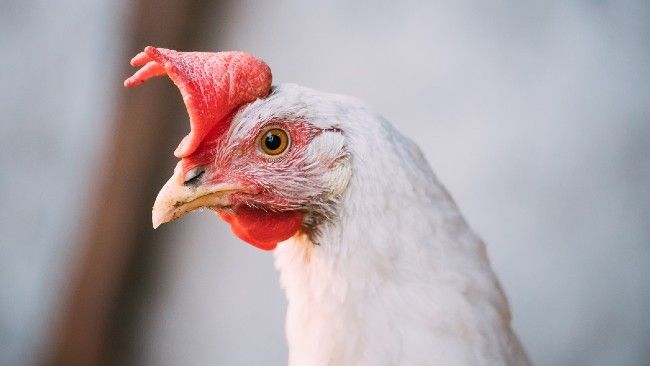
Broiler (meat) chickens
Number killed
1.2 billion a year.1Defra. 2024. Agriculture in the United Kingdom 2023. Available at: https://www.gov.uk/government/statistics/agriculture-in-the-united-kingdom-2023
Methods
77 per cent were gas stunned, 19 per cent were stunned by halal electrical waterbath stunning (of which one per cent used non-Annex 1 compliant parameters for poultry electrical waterbath stunning) and three per cent by non-stun methods.2Food Standards Agency. 2024. Results of the 2024 FSA Slaughter Sector Survey in England and Wales. Available at: https://www.gov.uk/government/publications/farm-animals-slaughter-sector-survey-2024
- Find out more about broiler chickens
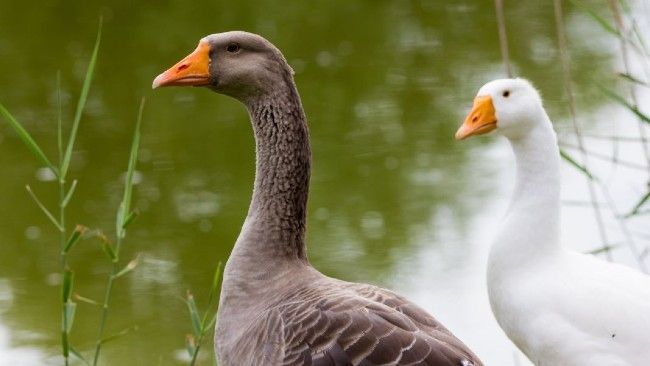
Ducks and Geese
Number killed
Nine million a year.1Defra. 2024. Agriculture in the United Kingdom 2023. Available at: https://www.gov.uk/government/statistics/agriculture-in-the-united-kingdom-2023.
Methods
The majority are gassed and the rest are electrically stunned (electric bath) before sticking (neck cutting).2Food Standards Agency. 2024. Results of the 2024 FSA Slaughter Sector Survey in England and Wales. Available at: https://www.gov.uk/government/publications/farm-animals-slaughter-sector-survey-2024 In certain circumstances, they can be killed by cervical (neck) dislocation.7Defra. 2023. Slaughter poultry, livestock and rabbits for home consumption. Available at: https://www.gov.uk/guidance/slaughter-poultry-livestock-and-rabbits-for-home-consumption
- Find out more about ducks and geese

Turkeys
Number killed
Nine million a year.1Defra. 2024. Agriculture in the United Kingdom 2023. Available at: https://www.gov.uk/government/statistics/agriculture-in-the-united-kingdom-2023.
Methods
The majority are gassed and most of the rest are electrically stunned followed by sticking (neck cutting) but 1.3 per cent were slaughtered using shechita non-stun methods.2Food Standards Agency. 2024. Results of the 2024 FSA Slaughter Sector Survey in England and Wales. Available at: https://www.gov.uk/government/publications/farm-animals-slaughter-sector-survey-2024 Manual cervical (neck) dislocation is permissible to kill smaller numbers (maximum 70 birds a day) of turkeys weighing up to five kilograms.7Defra. 2023. Slaughter poultry, livestock and rabbits for home consumption. Available at: https://www.gov.uk/guidance/slaughter-poultry-livestock-and-rabbits-for-home-consumption#stunning-poultry
- Find out more about turkeys
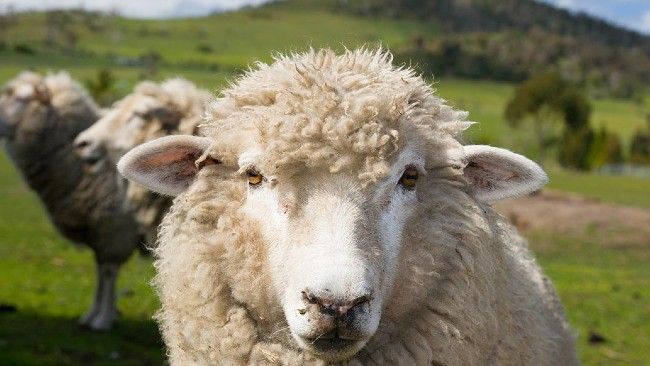
Sheep
Number killed
14.4 million a year.1Defra. 2024. Agriculture in the United Kingdom 2023. Available at: https://www.gov.uk/government/statistics/agriculture-in-the-united-kingdom-2023.
Method
71 per cent of sheep were stunned prior to slaughter (18 per cent by standard methods and 53 per cent by halal stun methods). Of those, most are electrically stunned, followed by sticking. The other main method is captive bolt. Sheep had the highest numbers slaughtered by a non-stun methods with 29 per cent being killed without being stunned first. The vast majority of these were killed by halal non-stun methods and a smaller number by shechita methods.2Food Standards Agency. 2024. Results of the 2024 FSA Slaughter Sector Survey in England and Wales. Available at: https://www.gov.uk/government/publications/farm-animals-slaughter-sector-survey-2024
- Find out more about sheep and lambs

Goats
Number killed
An estimated 24,000.8UK Food Standards Agency. 2024. Response to Viva! Freedom of Information Request 00395, August 6 2024.
Method
89 per cent of goats were stunned before slaughter (53 per cent by standard slaughter methods and 36 per cent by halal stun methods).2Food Standards Agency. 2024. Results of the 2024 FSA Slaughter Sector Survey in England and Wales. Available at: https://www.gov.uk/government/publications/farm-animals-slaughter-sector-survey-2024 There is little published information on slaughter practices for goats, but most slaughterhouses use the same methods as used for sheep; electrical stunning or captive bolt followed by sticking (throat cutting).9 Animal Welfare Committee (AWC). 2020. Opinion on the welfare of goats at the time of killing. Available at: https://assets.publishing.service.gov.uk/media/5f19ad20e90e07456b18abc6/AWC_Opinion_on_the_welfare_of_goats_at_the_time_of_killing.pdf Goats had the second largest proportion of non-stun slaughter, with 11 per cent being slaughtered by halal non-stun methods.2Food Standards Agency. 2024. Results of the 2024 FSA Slaughter Sector Survey in England and Wales. Available at: https://www.gov.uk/government/publications/farm-animals-slaughter-sector-survey-2024
- Find out more about goats

Horses
Number killed
Over 700.8 UK Food Standards Agency. 2024. Response to Viva! Freedom of Information Request 00395, August 6 2024.Until January 2022, retired racehorses were sent to slaughter for human consumption. This is no longer permitted so the number of horses killed for human consumption has fallen compared to previous years.
Method
Horses are killed by free-bullet fired into the brain, followed by sticking (throat cutting). Regulations state that horses must be killed in a separate room from other animals and that they must not be killed in sight of another horse or in a room where there are remains of another horse or other animal.10Defra. 2023. Red meat slaughterhouses: restraining, stunning and killing animals. Available at: https://www.gov.uk/guidance/red-meat-slaughterhouses-restraining-stunning-killing-animals#killing-horses
- Find out more about horses

Rabbits
Number killed
The rabbit farming industry in the UK is fairly small but in 2023, over 23,000 ‘small wild game in fur’ animals were ‘processed’ in FSA-approved game handling premises and form part of a category that includes rabbits, hares and rodents.8UK Food Standards Agency. 2024. Response to Viva! Freedom of Information Request 00395, August 6 2024.
Method
Government regulations state rabbits and hares must be stunned before bleeding and most commercially slaughtered rabbits are electrically stunned before sticking. However, government guidelines permit a range of methods including penetrative or non-penetrative captive bolt, electric tongs (head-only or head-to-body) or “a firm blow to the head” for rabbits that weigh five kilograms or less! They also say a firearm with free projectile (eg a shotgun) can be used. This is a killing method, and so would not need to be followed by bleeding.7Defra. 2023. Slaughter poultry, livestock and rabbits for home consumption. Available at: https://www.gov.uk/guidance/slaughter-poultry-livestock-and-rabbits-for-home-consumption#stunning-rabbits-and-hares
- Find out more about Rabbits
Other animals

Honey bees
Number killed
Unknown.
Methods
Methods are diverse and rarely follow administrative directives or veterinary guidelines. Techniques used include poisoning with hydrocarbon (petrol or diesel) fumes, hydrogen cyanide or sulphur dioxide (SO2) poisoning, freezing, replacing oxygen with CO2 from dry ice, suffocation by spraying with soapy water or wrapping the hive in plastic, intoxication by spraying with alcohol and drowning by immersion in water.11 Roy C and Vidal-Naquet N. 2022. Euthanasia of honey-bee colonies: Proposal of a standard method. Canadian Veterinary Journal. 63 (5) 541-544.
- Find out more about honey bees
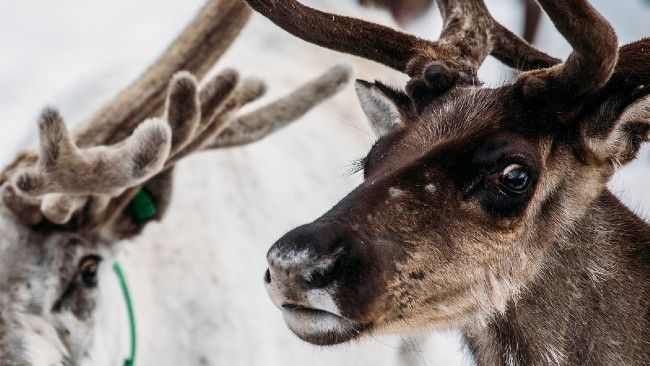
Reindeer
Number killed
Estimated hundreds of thousands worldwide.
Methods
Reindeer are rounded up in the wild in Northern Europe, Russia, the US and Canada and killed in slaughterhouses via captive bolt followed by sticking. When they are rounded up for slaughter they often panic and some get their antlers or limbs caught in equipment, or between the transportation trucks, leading to injuries such as broken limbs. Evidence of mass poaching has also been revealed and wild reindeer in Russia have declined by 40 per cent in just a few decades.12WWF. 2017. Mass poaching of wild reindeer uncovered in Russia. Available at: https://www.arcticwwf.org/newsroom/news/mass-poaching-of-wild-reindeer-uncovered-in-russia/
- Find out more about reindeer

Turtles
Number killed
Tens of thousands per year worldwide are killed for meat or trade of their parts and hundreds of thousands are accidentally caught by the fishing industry.13 World Wide Fund for Nature (WWF). 2025. Sea Turtles. Available at: https://www.worldwildlife.org/species/sea-turtle
Methods
Blow to the head, ramming a pointed stick up the nostril and into the brain, cutting the throat, using a pointed chisel and heavy hammer to destroy the brain, gun shot to the head or captive bolt. Marine turtles are difficult to render unconscious and kill because they can tolerate low levels of oxygen (necessary for diving). Therefore it is likely that turtles can feel pain and distress for a long period even after having their head cut off or losing a high proportion of blood after their throat has been cut. It can also be very difficult to confirm when a turtle is dead as their heart will continue to beat even when the brain has been destroyed. Sometimes they are butchered or cut up immediately after capture, while they are still alive. This practice is considered extremely inhumane.14RSPCA. 2025. Can turtles and dugongs be killed humanely using traditional hunting methods? Available at: https://kb.rspca.org.au/knowledge-base/can-turtles-and-dugongs-be-killed-humanely-using-traditional-hunting-methods/
- Find out more about turtles

Crocodiles
Number killed
Estimated millions a year.
Method
Captive bolt (penetrating or non-penetrating), shooting (free bullets), percussive blow to the head (not practical for crocodiles larger than three kilograms or for large numbers of them), spinal cord severance immediately followed by pithing (including decapitation for very small individuals). The latter is the most common method. Methods deemed unacceptable by the the IUCN-SSC Crocodile Specialist Group (CSG) include exsanguination (severe blood loss), freezing or cooling, heating or boiling, suffocation or drowning, inflation using compressed gas or liquid, live evisceration or skinning, constriction bands to induce cardiac arrest, inhalation of asphyxiating gases (CO2, carbon monoxide or nitrogen), use of neuromuscular blocking drugs alone, cervical dislocation, decapitation or cord severance without pithing.15Martelli P, Shilton C and Manolis C. 2020. Humane euthanasia/killing methods for crocodilians – an update. Crocodile Specialist Group Newsletter 39 (1) 6-8.However, crocodiles are often stunned using a car battery, stabbed with a blade through the top of their skull, inflated with air and sliced head to tail to remove their skin.
- Find out more about crocodiles
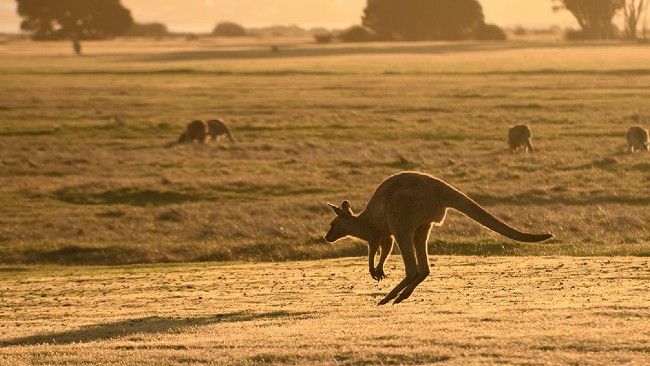
Kangaroos
Number killed
An estimated 36.5 million kangaroos and wallaroos were subject to population control in the five states that allow commercial harvesting – New South Wales, Queensland, Victoria, South Australia and Western Australia in 2023. That year, quotas in those states allowed around five million to be killed.16Whiteman H and Ramsay G. CNN. 2023. Australia loves its kangaroos so much it sets annual quotas to kill them. Available at: https://edition.cnn.com/2023/03/25/sport/australia-kangaroo-culling-program-intl-hnk-dst/index.html
Method
Kangaroos are shot and killed in the wild in Australia. It is impossible to monitor the killing in the outback at night. Tens of thousands are mis-shot. Joeys in the pouch of shot mothers are either decapitated if very young or killed with a blow to the head. Dependent ‘at foot’ joeys often escape, but die of exposure, starvation or are predated upon. It has been estimated that as many as 440,000 dependent young kangaroos in New South Wales and Queensland are either clubbed to death every year, or left to starve after their mothers are killed.17Animals Australia. 2021. Understanding the issues: kangaroo shooting. Available at: https://animalsaustralia.org/our-work/shooting-and-hunting/kangaroo-shooting/
- Find out more about kangaroos

Ostriches
Number killed
Unknown as there is no single, reliable, comprehensive source of information on global production, figures are likely in the hundreds of thousands.
Method
Attempts to use physical stunning on farms is difficult as ostriches are naturally flighty animals and it can take a minimum of four stock people to restrain an ostrich for slaughter. Most commercial ostriches are slaughtered in abattoirs using electrical head-only stunning, followed by bleeding.18Humane Slaughter Association. 2018. Slaughter and killing of minority farmed species . Available at https://www.hsa.org.uk/downloads/technical-notes/tn25-slaughter-and-killing-of-minority-farmed-species.pdf[Accessed 20 July 2020].
- Find out more about ostriches
Terminology
Sticking
Sticking (also known as exsanguination) is when an animal’s neck is cut, using a very sharp knife, to sever the major blood vessels in their neck or chest that supply the brain, ensuring rapid blood loss and therefore death. This is also sometimes referred to as ‘bleeding out’ or being ‘bled’.
Shackling
This is where after stunning the animal is shackled by a hind leg and hoisted above the ground so that they are hanging upside down. The slaughterhouse worker or a machine will then cut the animal’s throat to bleed him or her to death.
Live Shackling
This is where an animal is shackled by their legs and hung upside down whilst being fully conscious, causing immense distress and pain.
Gassing
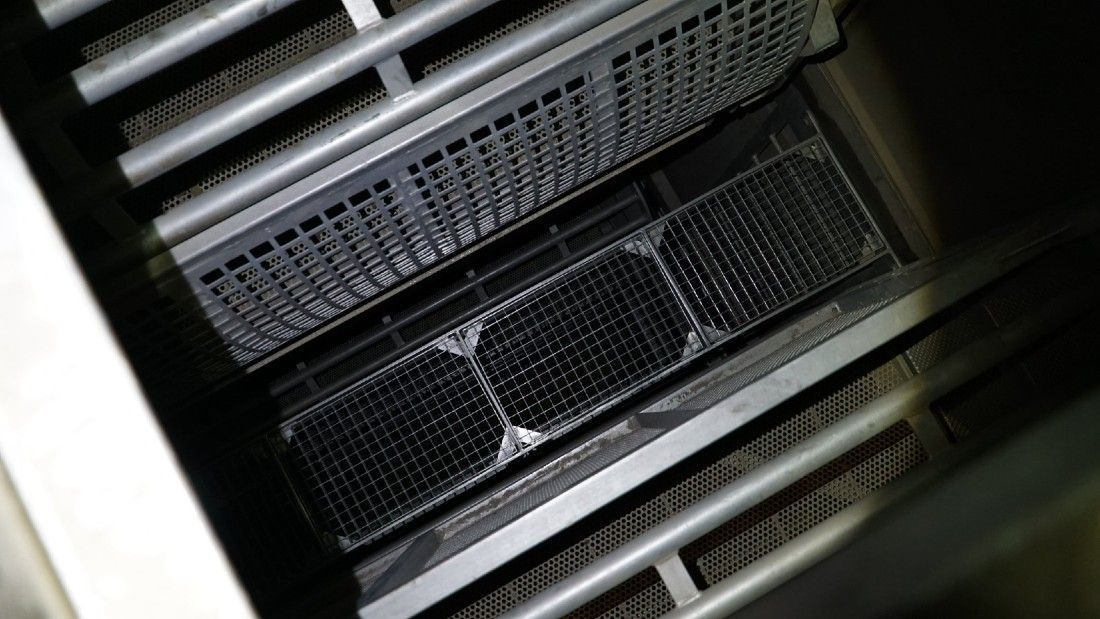
The most common slaughter technique for many intensively farmed animals is gassing. This is usually because it is the cheapest and quickest way to kill many animals at once. Although it has often been thought of as causing less suffering than other visibly more brutal methods, this is not true, and gassing methods can cause horrific suffering to animals in their last moments.
Which animals is it used on?
Electrical stunning
Electrical stunning, or electric stun-kill where the animal is stunned and killed at the same time, is still one of the most common slaughter method for most farmed animals. Electrical stunning and killing is done in different ways depending on the animal.
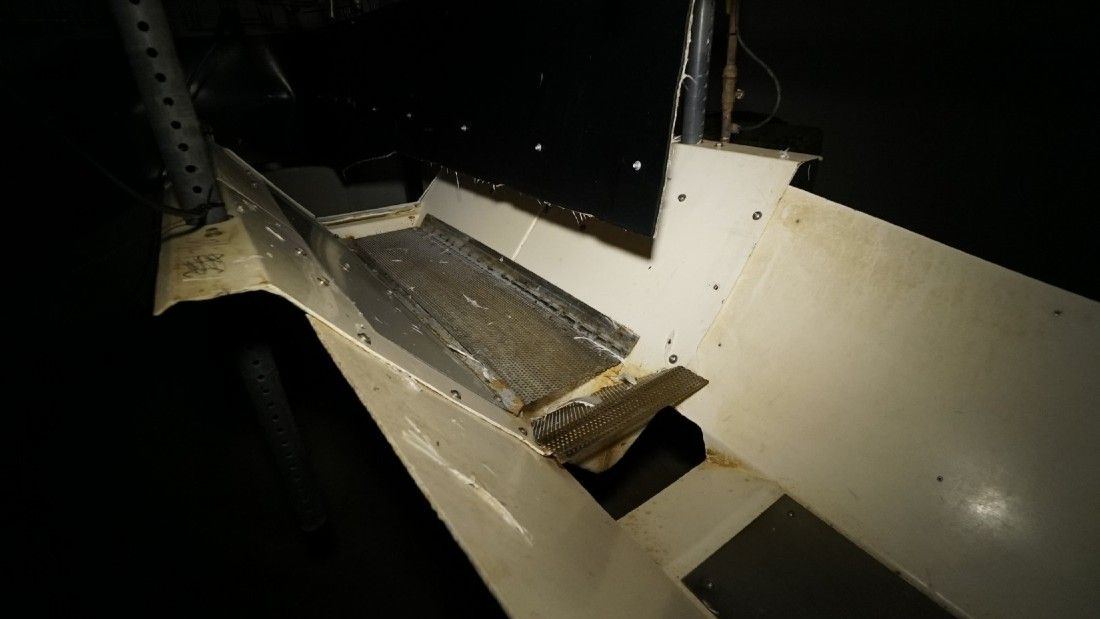
Which animals is it used on?
- Chickens (broiler)
- Ducks
- Geese
- Turkeys
Method
This is less commonly used than gassing as it involves live shackling where live birds are hung upside down with their legs in metal shackles and moved along a conveyor belt towards an electrified water bath. When the bird’s head touches the water, an electrical circuit between the water bath and shackle stuns the birds before they move along the line to a mechanical neck cutter that severs the major blood vessels in their necks. Slaughterhouses can kill up to 10,000 birds an hour using this method.
A lower voltage electric bath is also used as halal method which allows for stunning.
Issues
Due to this high throughput and the number of birds being ‘processed’, there is a high chance of inefficient stunning. Some birds, who lift their heads away from the water baths, miss being stunned entirely and have their throats cut while still fully conscious. The neck cutter is also fallible, as some birds have been found to receive only single cuts while others are missed entirely. In these instances, birds may be fully or partially conscious when they enter the scalding tanks to loosen their feathers and are essentially boiled alive.
Live shackling of birds causes intense pain, and hanging birds by their legs is highly stressful for them.
Head-to-back stun killing (electric tongs)

Which animals is it used on?
- Cattle (dairy and beef)
- Sheep
- Goats
- Pigs
Method
Head-to-back stun-killing is where a device resembling a large pair of tongs with electrodes fixed to a handpiece is placed on either side of the animal’s head by a slaughterhouse worker. A current simultaneously passes through the brain and heart of the animal to induce cardiac arrest. They are then shackled, hoisted and bled by throat cutting.
This is the most common method of slaughter for sheep and goats, and is sometimes used, although less commonly, to kill cattle and stun pigs before sticking (throat cutting).
Issues
Electrical stunning is not always effective – there are many variables that can and often do go wrong; the current can be too weak, the electrodes may not be applied to the correct part of the head, or are not held in position long enough to make the stun properly effective. The result can be that the stun is short-lived and the animal regains consciousness before his or her throat is cut. If this stun is effective, an electric stun only lasts for around 20 to 40 seconds, so stun to knife intervals must not exceed this time.
Also, even if the animal is successfully stunned, the moments leading up to stunning and slaughter are often terrifying for the animal. They can hear the noises and smell the fear of other animals in the slaughterhouse and they do all they can to try and escape.
Captive bolt
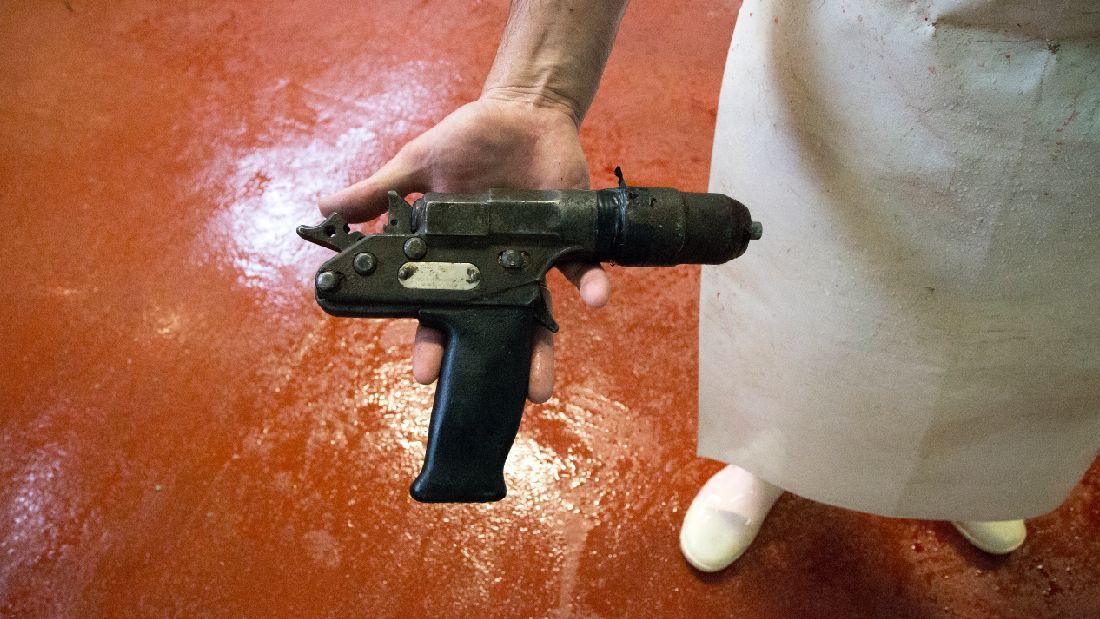
Which animals is it used on?
- Cattle (beef, dairy and calves)
- Sheep
- Goats
- Ostriches
Method
A captive bolt gun fires a retractable metal bolt against the animal’s head, and in many cases into the animal’s brain, which should render them immediately unconscious. The animal will then collapse but may continue to thrash their limbs and bleed from the head and nose.
Once unconscious, the animal will need to be immediately slaughtered before regaining consciousness. This will usually be done via sticking, whereby the animal’s throat is cut and allowed to ‘bleed out’ (bleed to death).
There are slightly different processes for captive bolt stunning depending on the animal.
Issues
There is a lot of room for error in the captive bolt method.
Head restraint systems for cattle can cause great distress and if used ineffectively can result in an inefficient stun.
Both cattle and goat’s skulls are hard to penetrate and if the stun is ineffective, they can regain consciousness hanging upside-down on the production line, tragically aware of everything around them but unable to escape.
Each year it is estimated that thousands of cattle, for example, are not correctly stunned and will have to be shot again or be knifed whilst conscious.104. Veterinary Policy Research Foundation (VPRF). 2018. Non-stun slaughter: key facts. Available at: https://www.vprf.co.uk/_files/ugd/a05415_c287fc2451c3464489cefae396f6bc1d.pdf
Free bullet

Which animals is it used on?
- Horses
- Calves
Method
The free bullet method is where a bullet from a shotgun, as opposed to a captive bolt, is fired at point blank range into the brain of the animal. The bullet is designed to expand on impact to cause instant death. Their bodies are then shackled by the hind legs, they are hauled up and their throats are cut and they are bled. This is the only method used to kill horses and is also used by farmers to shoot surplus male dairy calves by a farm worker or a hired slaughter-person.
Issues
Due to horses’ high sensitivity, social nature and flightiness, there are special procedures for slaughtering them in the UK. They are not supposed to be killed within sight of any other horse or in a room that contains the remains of horses or other animals. This is to avoid triggering a natural fear response to their impending death. As with the captive bolt, the animal’s head must be restrained to ensure an effective shot, leaving high potential for error and misfiring.
Cervical (neck) dislocation
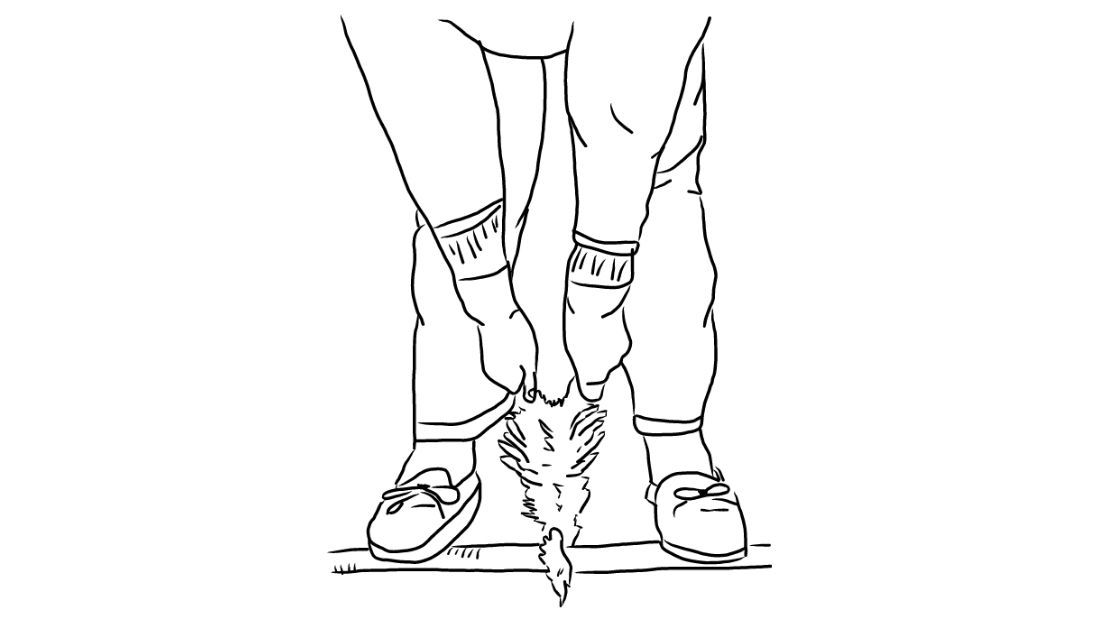
Which animals is it used on?
- Geese
- Ducks
- Turkeys
Method
Neck dislocation is a method that can be used to kill poultry up to five kilograms in weight. It is usually used on large farms to kill diseased or injured birds, or on smallholdings (that kill less than 10,000 birds a year) when no other methods are available. Farmers are allowed to kill up to 70 birds a day using this method.11Defra. 2023. Slaughter poultry, livestock and rabbits for home consumption. Available at: https://www.gov.uk/guidance/slaughter-poultry-livestock-and-rabbits-for-home-consumption
Neck dislocation kills the bird by rupturing their spinal cord and blood vessels in the neck, which disrupts blood flow to the brain and stops breathing. It can be done manually – by the hands of a stockperson, or using a special instrument designed to crush the bird’s windpipe.
Issues
Neck dislocation without prior stunning has been widely used as a method of killing poultry. However, research shows that neck dislocation does not consistently concuss the brain and it is unlikely to cause immediate insensibility.12Humane Slaughter Association. 2021. Neck Dislocation. Available at: https://www.hsa.org.uk/neck-dislocation/neck-dislocation
Neck dislocation without prior stunning is therefore not recommended for the routine slaughter of poultry. Weight restrictions for killing birds using this method are ignored, even by ‘high welfare’ farms, as exposed in Viva!’s 2019 investigation into turkey farm, Gravel Farm.
Maceration
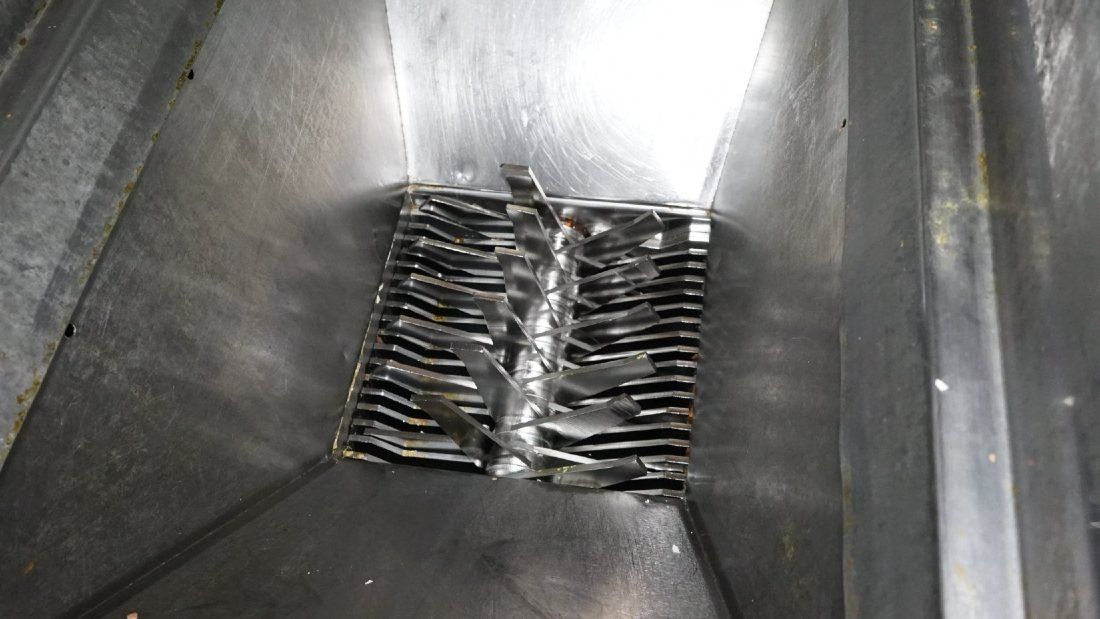
Which animals is it used on:
- Chicks
Method
Maceration, which involves chicks being ground up by a large fast-moving grinder, was used in the past in the UK, and is still used in much of the world, including the US and Australia, where it is considered the ‘more humane’ option. Maceration is still permitted in the UK although the industry claims it is no longer used.
Percussive stunning

‘Knocking’ Piglets
Method
It is legal to kill young piglets by a blow to the head in certain situations, such as sickness or injury. Farm workers are allowed to use a blunt instrument to deliver a blow to the back of the head, or hold the piglet by the back legs and slam him or her hard against a concrete floor or wall.
If there is any doubt that the animal has not been killed effectively, the blow should be immediately repeated. This kind of killing is only allowed to be carried out on piglets weighing up to five kilograms and is limited to 70 animals a day.
Issues
Once they are older and heavier than five kilograms, the blow is unlikely to kill them immediately, and they may instead endure an agonising and drawn out death. Viva! investigations have exposed piglets over the legal minimum weight having their heads slammed against concrete and killed illegally.
Pithing

Which animals is it used on?
- Cows
- Ostriches
Animals slaughtered using this method cannot be used for human consumption.
Method
Pithing is a method that involves physically damaging an animal’s brain and spinal cord to ensure death. It was banned in the UK in 2001 for cattle, sheep and goats destined for human consumption.
During pithing, a wire or rod is inserted through a hole in the head, usually made by a captive bolt, which destroys the lower part of the brain and spinal cord. This mechanical damage to the brain ensures rapid death. In the past, this was practiced on cattle, sheep and goats.
It has been illegal to carry out on animals destined for consumption since 2001 due to fears it could help spread diseases such as BSE. It can still be carried out on injured animals or those culled for disease control.
The slaughter of marine animals is often not considered, yet far more marine animals endure agonising deaths than any other farmed animal on the planet.
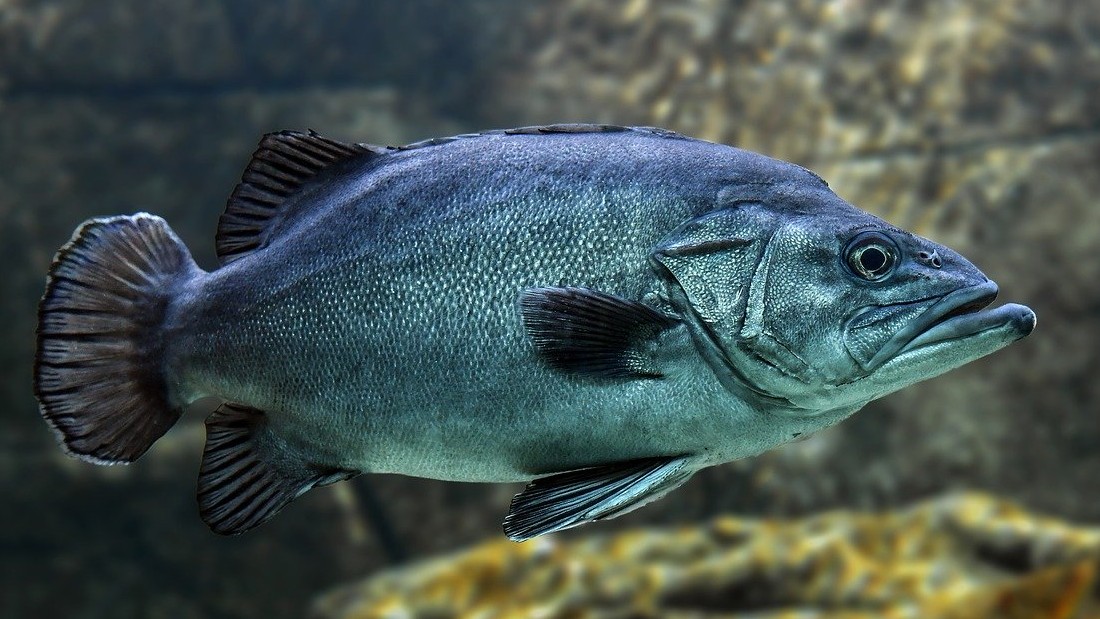
Fish
Number killed
Billions of fish per year
Methods
Fish are stunned and slaughtered in a variety of ways depending on the species and whether they’re farmed or caught.
Issues
It is now widely accepted that fish are sentient animals with cognitive functioning and perceptual experience of pain and regulations on the protection of animals at the time of killing (PATOK), retained in UK law after withdrawal from the EU, require that farmed fish are spared avoidable pain, distress or suffering during their killing. However, the regulation specifically excludes farmed fish from its other detailed provisions. Furthermore, there is no mention of farmed fish in the England Welfare of Animals at the Time of Killing (WATOK) regulations, nor in similar legislation in Scotland, Wales and Northern Ireland.4Animal Welfare Committee (AWC). 2023. Update to the 2014 FAWC Opinion on the welfare of farmed fish at the time of killing. Available at: https://assets.publishing.service.gov.uk/media/65ea176c5b652445f6f21a73/Update_to_2014_FAWC_Opinion_on_the_welfare_of_farmed_fish_at_the_time_of_killing.pdf
The Humane Slaughter Association say that a fish should only be out of the water for a maximum of 15 seconds before stunning.2Humane Slaughter Association (HAS). 2016. Humane Harvesting of Fish. Available at: https://www.hsa.org.uk/downloads/publications/harvestingfishdownload-updated-with-2016-logo.pdf Often fish are left out of the water for considerably longer than that which means they are left to die a slow, painful and distressing death as they are starved of oxygen. Little or no consideration is given to the welfare of fish at their time of death, even though we know fish can experience fear and feel pain.
The RSPCA Assured and Soil Association assurance schemes have committed to ‘humane slaughter’ practices for farmed animals but these schemes do not cover wild-caught fish. There is very little legal protection for fish at the time of slaughter. Scientific research shows that fish are sentient beings and the Animal Welfare (Sentience) Act 2022 recognises all fish as sentient beings in English law. However, UK animal welfare laws still do not protect commercially caught wild fish. For example, stunning fish before slaughter is rare and gutting them alive is a common practice.5Garratt and McCulloch. 2022. Wild fish welfare in UK commercial sea fisheries: qualitative analysis of stakeholder views. Animals (Basel). 12 (20) 2,756.

Lobsters
Number killed
Over two million in the UK, globally, many millions more.
Methods
Lobsters are killed in a number of ways, all of which come with the potential to cause suffering. The most well-known method is boiling alive, either by placing them into boiling water or by increasing the water temperature gradually to boiling point. This results in prolonged and severe suffering, demonstrated by the animals’ vigorous struggling, thrashing and attempts to escape 6.Conte et al. 2021. Humane slaughter of edible decapod crustaceans. Animals (Basel). 11 (4) 1,089.
Other methods include being frozen to death or, if being killed commercially, they are often stunned in electric baths before being boiled. They can also be subjected to a live cutting (splitting) method that severs major nerve centres without pre-stunning since there are no real rules on the humane slaughter of lobsters in the UK. As anyone can buy and kill lobsters, no matter how inexperienced they are, the chances of getting this cutting process wrong are high, and the consequences are unimaginable suffering for the lobster.
Decapod crustaceans, such as lobsters and crabs, were recognised under UK law as sentient in April 2022, but they still have very little protection in place to stop inhumane suffering and when the law changed, the then Government said: “Today’s announcement will not affect any existing legislation or industry practices such as fishing. There will be no direct impact on the shellfish catching or restaurant industry. Instead, it is designed to ensure animal welfare is well considered in future decision-making.”20Defra. 2021. Lobsters, octopus and crabs recognised as sentient beings. Available at: https://www.gov.uk/government/news/lobsters-octopus-and-crabs-recognised-as-sentient-beings. So although the practice of boiling lobsters alive is now outlawed in several countries including Switzerland, Norway and New Zealand, on the basis such methods cause undue distress and pain, in the UK, it has not yet been banned despite the law change.
- Find out more about lobsters
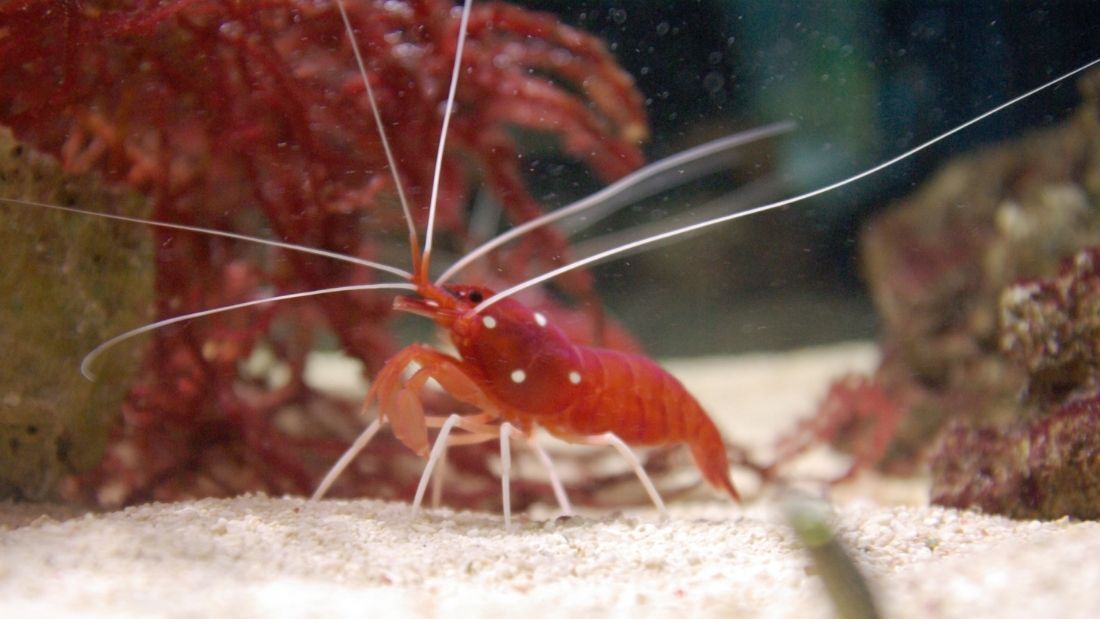
Prawns and shrimps
The terms ‘shrimp’ and ‘prawn’ are often used interchangeably. In the UK, the word ‘prawn’ is more common on menus than ‘shrimp’; the opposite is true in North America.
Number killed
Trillions.
Method
On prawn and shrimp farms, nets are used to haul thousands of the animals out of the water. Crammed so closely together, many prawns suffocate in the process. Those that survive are usually packed into chilled boxes to keep them fresh and alive. Some are left in ice too long and will freeze to death, others will be left to suffocate and yet more will be cut into without having been chilled at all, fully conscious. Many are sold alive and killed by consumers using whichever method they choose.
Most studies on slaughter methods for decapods have focused on larger species such as lobsters and crabs and small species such as prawns and shrimp and are overlooked, even though far more small decapods are used for human food than large ones. Since the slaughter of prawns is completely unregulated, there is no way of knowing how prawns eaten in the UK have been killed.
- Find out more about prawns and shrimp

UK law states that animals must be stunned before slaughter. However, exemption is given for religious slaughter which demands that the animal be alive, and in some cases conscious, when they are killed.
There are two main types of religious slaughter in the UK – halal, used to kill animals for Muslim communities, and shechita for Jewish communities. Both involve cutting the animal’s throat without pre-stunning (see below) and draining blood from the carcass. Both religions also prohibit eating pig meat. Religious slaughter must still take place in slaughterhouses by someone who has a certificate of competence and the meat must be intended for consumption by Muslim or Jewish people.
There is some debate about elements of halal with some groups permitting stunning providing that it does not kill the animal. According to the RSPCA, around 88 per cent of animals slaughtered in the UK for halal are pre-stunned (albeit using non-standard halal stunning methods) and 12 per cent are not pre-stunned. All animals slaughtered under the shechita (for Kosher) are not pre-stunned.
Based on the latest Food Standards Agency figures, 30.1 million animals were slaughtered without pre-stunning in 2024, an 18.5 per cent increase from 2022, when 25.4 million animals were slaughtered without pre-stunning.1Food Standards Agency. 2024. Results of the 2024 FSA Slaughter Sector Survey in England and Wales. Available at: https://vprf.files.wordpress.com/2018/02/non-stun-slaughter-vprf-fact-file-feb-2018.pdf This means that in 2024, 26 million broiler chickens, 3.1 million sheep and 23,000 cattle were slaughtered without pre-stunning.2RSPCA. 2024. End non-stun slaughter for farm animals. Available at: https://www.rspca.org.uk/getinvolved/campaign/slaughter
This is a real concern as, based on predictions, it means over half a million animals in the UK will be slaughtered without stunning every single week.
Halal
What is halal slaughter?
In Islamic law, dhabihah (or zabiha) is the prescribed method of slaughter for halal meat. For it to be considered halal (permitted), meat must come from an animal that is alive and healthy at the time of slaughter. A short blessing or dedication (tasmiyah) must be recited before slaughtering an animal for halal meat. The animal’s throat must be cut with a sharp knife severing the carotid artery, jugular vein and windpipe in a single swipe and blood must be drained from the carcass.
However, due to the scale and the sheer number of animals being slaughtered under halal practices, it is not always cost efficient for slaughter to be done manually. In larger abattoirs, mechanical slaughter is carried out by rotating blades with no Muslim person present either to perform the slaughter, or to recite the tasmiyah for each individual death. Instead, a prerecorded prayer may be played into the slaughterhouse or the blades may be blessed each morning before the machinery is turned on. This is problematic for some who say mechanical slaughter does not comply with the halal requirements3Halal Monitoring Committee UK. 2025. Issues of mechanical slaughter and stunning. Available at: https://halalhmc.org/resources/issues-of-mechanical-slaughter-and-stunning/
Since the animal must be alive, but not necessarily conscious, halal slaughter may include both stun and non-stun methods. There is opposition within the Muslim community to stun methods as some argue this causes more suffering to the animal and may cause the body of the animal to be wasted if they are killed during the stun (which often happens with standard stun methods used to kill chickens). Arriving for slaughter already dead renders animals unfit for Muslim consumption.
Halal stun slaughter methods vary between animals.
Which animals is it used on?
Halal non-stun
Which animals is it used on?
- Sheep
- Goats
- Calves
- Cattle
- Broiler chickens
Sheep are the species with the largest proportion of animals slaughtered by a non-stun method in the UK with 28 per cent killed by halal non-stun methods. Over 10 per cent of goats, around six per cent of calves, 0.4 per cent of adult cattle and 2.5 per cent of broiler chickens are also killed in the UK using halal non-stun methods.1Food Standards Agency. 2024. Results of the 2024 FSA Slaughter Sector Survey in England and Wales. Available at: https://www.gov.uk/government/publications/farm-animals-slaughter-sector-survey-2024
Method
Sheep, goats and cattle must be restrained individually and killed one at a time. A hand-held knife that’s sharp and large enough for the animal being killed must be used with quick, uninterrupted movements of the knife. For cattle, sheep and goats, both carotid arteries and jugular veins must be cut. For birds, both carotid arteries must be cut.5Defra 2023. Slaughter without stunning. Available at: https://www.gov.uk/guidance/halal-and-kosher-slaughter
Issues
Non-stun slaughter can lead to prolonged suffering and stress for the animal. The slaughter process is not always carried out correctly due to a wide range of factors such as equipment failure, human error, or poorly trained workers. If the cut is not effective, this could lead to having to repeatedly hack away at an animal’s neck before they are killed.
Even after their throat has been cut, non-stunned animals may remain conscious for up to two minutes for cattle, 20 seconds for sheep and 2.5 minutes for poultry. 6EFSA. 2012. Opinion of the Scientific Panel on Animal Health and Welfare (AHAW) on a request from the Commission related to welfare aspects of the main systems of stunning and killing the main commercial species of animals. Available at: https://www.efsa.europa.eu/en/efsajournal/pub/45 An agonising death lasting minutes filled with terror, fear and pain.
Shechita slaughter
What is Shechita (Kosher) slaughter?
In Judaism, kosher relates to foods that are acceptable for consumption. For meat to be kosher, the animal must be slaughtered through the shechita method. This means the animal must be healthy and the person slaughtering the animal must be a trained Schochet (Jewish slaughter person), and an extremely sharp knife must be used to kill the animal. Stunning prior to slaughter is not permitted in shechita slaughter, and meat from an animal slaughtered in this way are forbidden.
Method
This specific type of slaughter, known as Shechita, is performed using a chalaf – a surgically sharp knife. The slaughter is carried out on individual animals by hand by a licensed and trained Jewish professional called a Shochet who has special training in animal anatomy and the laws of shechita. Schochets are supposed to be examined annually by the Rabbinical Commission for the Licensing of Shochetim. It is argued that this method, which uses a knife twice the width of the animal’s neck, is sufficient to guarantee a quick death because of the speed and expertise used.
Which animals are killed using the shechita method?
A relatively small percentage of animals in the UK are killed via the Shechita method for Jewish consumption; 2.3 per cent of cattle, 0.8 per cent of sheep, 0.3 per cent of broiler chickens, 1.3 per cent of turkeys and 0.3 per cent of other poultry. 1 Food Standards Agency. 2024. Results of the 2024 FSA Slaughter Sector Survey in England and Wales. Available at: https://vprf.files.wordpress.com/2018/02/non-stun-slaughter-vprf-fact-file-feb-2018.pdf These numbers may sound low but given the huge number of farmed animals slaughtered in the UK each year (over 1.1 billion), it means many thousands are being killed without pre-stunning.
Issues
It is said that properly performed Shechita should result in cattle collapsing within 10 to 15 seconds. Some observations have shown that animals remain conscious for more than 30 seconds after shechita.5Library of the European Parliament. 2012. Religious slaughter of animals in the EU. Available at: https://www.europarl.europa.eu/RegData/bibliotheque/briefing/2012/120375/LDM_BRI(2012)120375_REV2_EN.pdf As with non-stun halal, shechita slaughter may cause animals to suffer an agonising death of up to several minutes after their throat has been cut.
Removal of Blood
Muslim religious law requires that an animal must be drained of blood before it is halal (permissible). Ritual slaughter according to Jewish dietary law (shechita), has the same prescription. This is one of the reasons why religious slaughter involves cutting the throat of a living and sometimes fully conscious animal. However, it is impossible to drain every single drop of blood completely from an animal and if anyone truly did not want to eat blood, they would have to stop eating meat.
Studies show stunning does not reduce the amount of blood drained from an animal and researchers hope that these findings may help promote the use of stunning during Halal slaughter.7 Anil et al. 2006. Comparison of Halal slaughter with captive bolt stunning and neck cutting in cattle: exsanguination and quality parameters. Animal Welfare. 15 (4) 325-330.
The debate around religious slaughter
There is a legitimate concern that non-stunned meat may be sold in supermarkets as there is no legal requirement that it should be labelled as meat from an animal killed without pre-stunning. In 2024, for example, 54 per cent of non-stunned goat meat had an unspecified domestic destination.1Food Standards Agency. 2024. Results of the 2024 FSA Slaughter Sector Survey in England and Wales. Available at: https://www.gov.uk/government/publications/farm-animals-slaughter-sector-survey-2024
Non-stun slaughter is illegal in many countries now, including Denmark, Malta, Slovenia, Sweden, Cyprus, Finland, Luxembourg, Switzerland, Norway, Iceland and Wallonia and Flanders in Belgium. New Zealand has never permitted the slaughter of animals without stunning.9RSPCA. 2019. Improving the welfare of farm animals at the time of their death. Available at: https://www.rspca.org.uk/documents/1494939/7712578/Non+Stun+Slaughter+Briefing.pdf/dec09ee6-9766-bc17-bbd3-6b637472110d Viva! strongly urge the UK government to follow these examples and ban the non-stun slaughter of animals.




